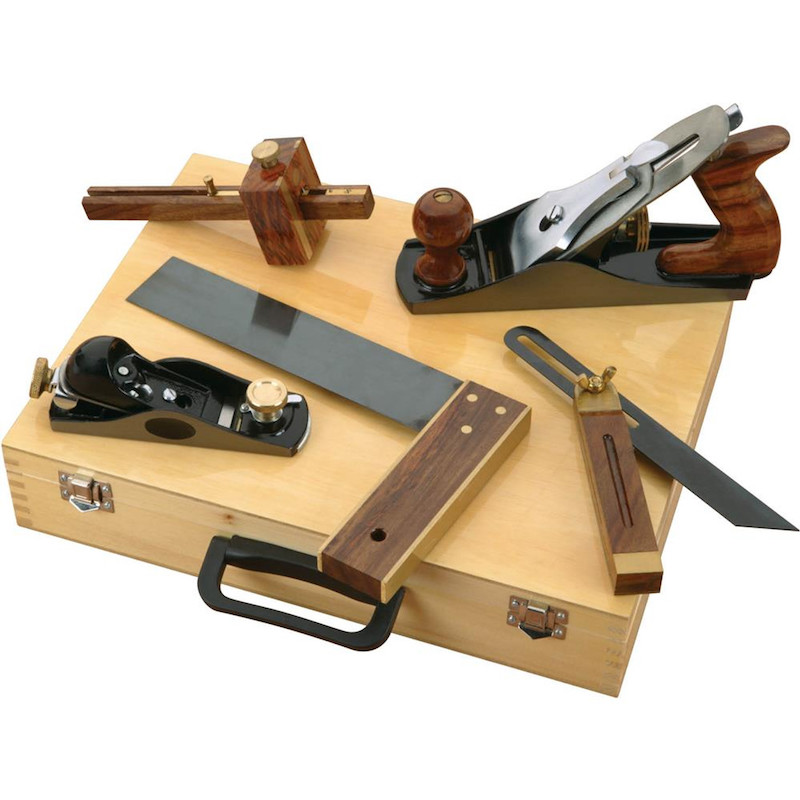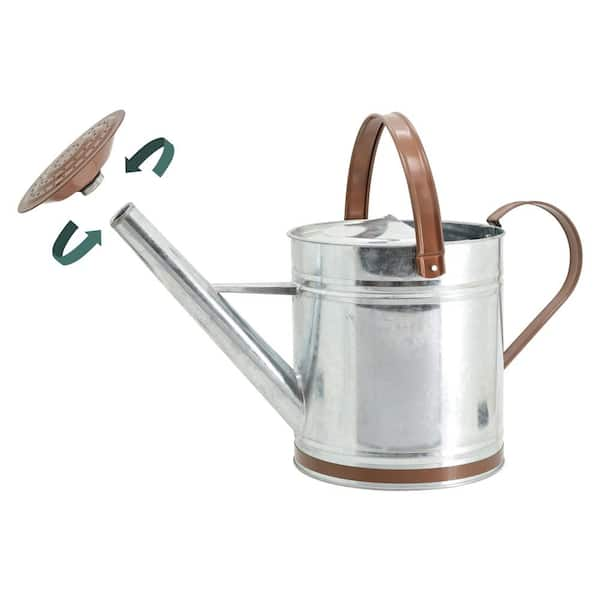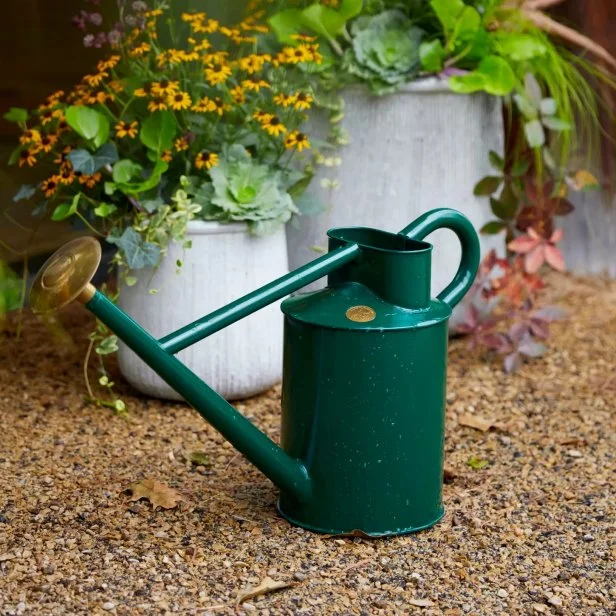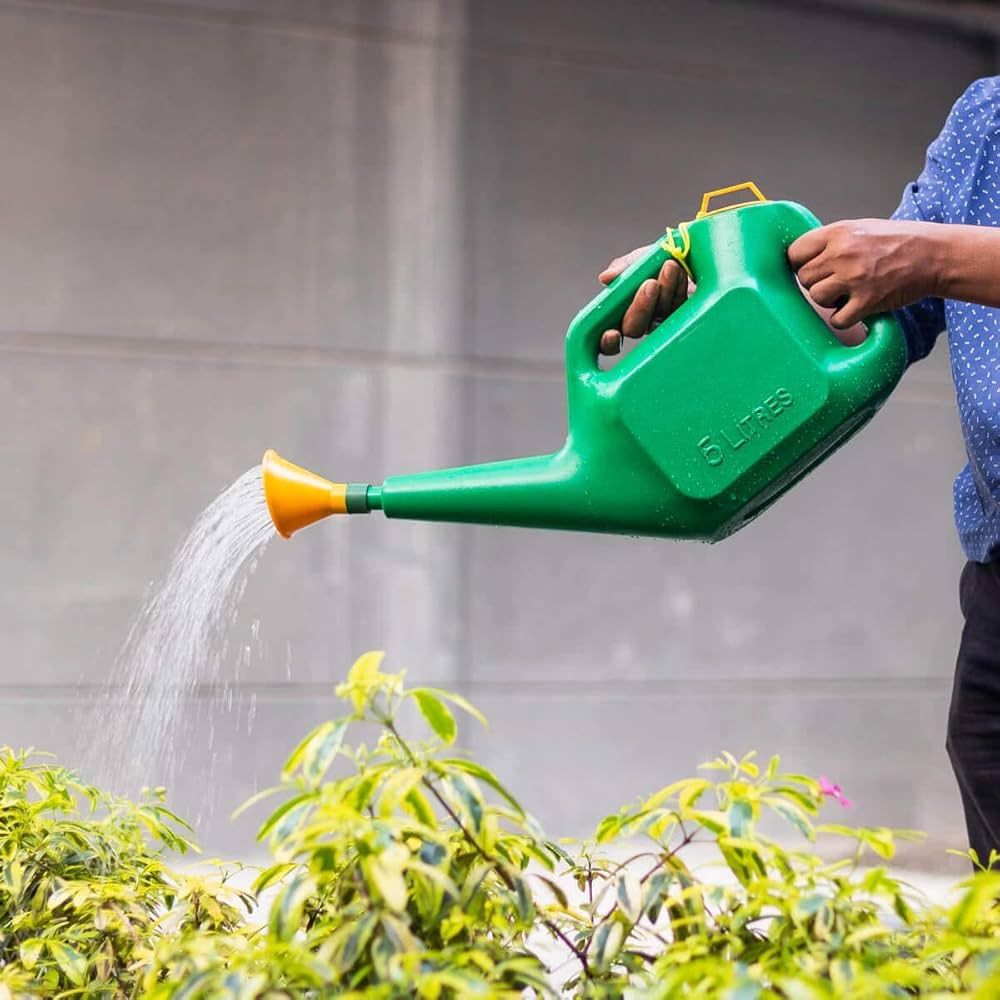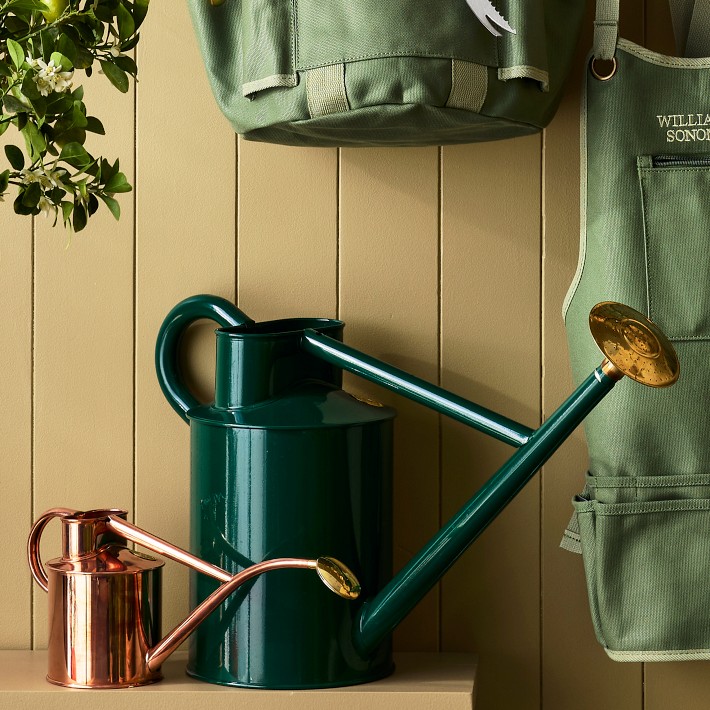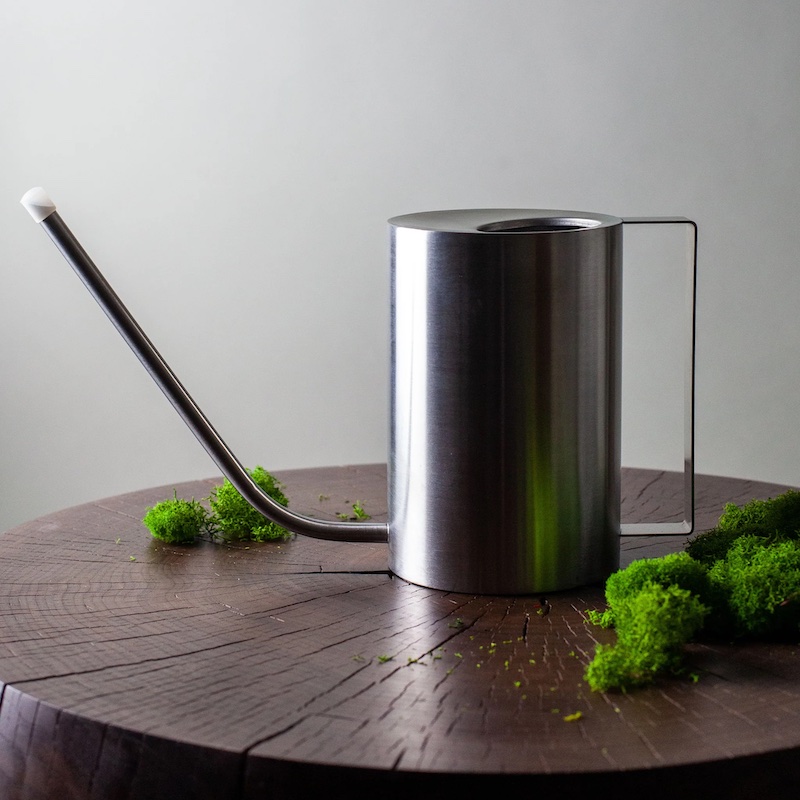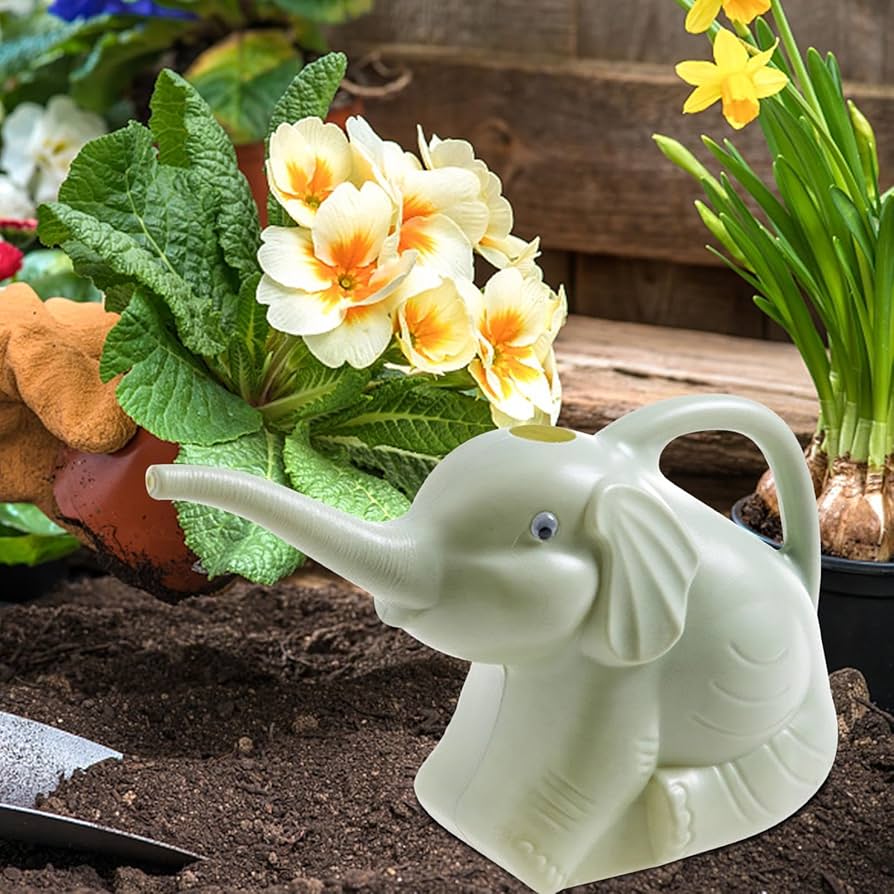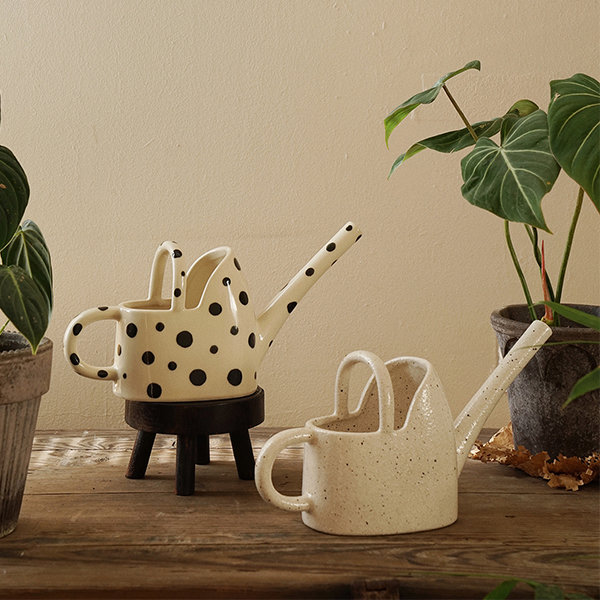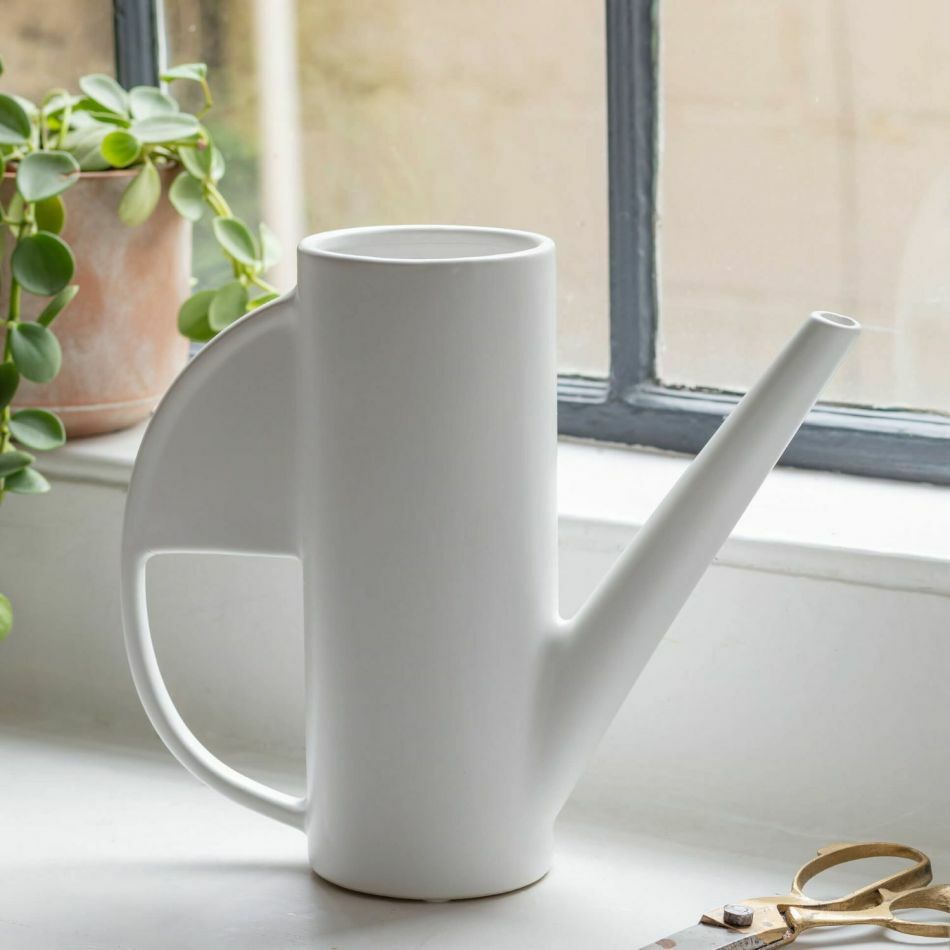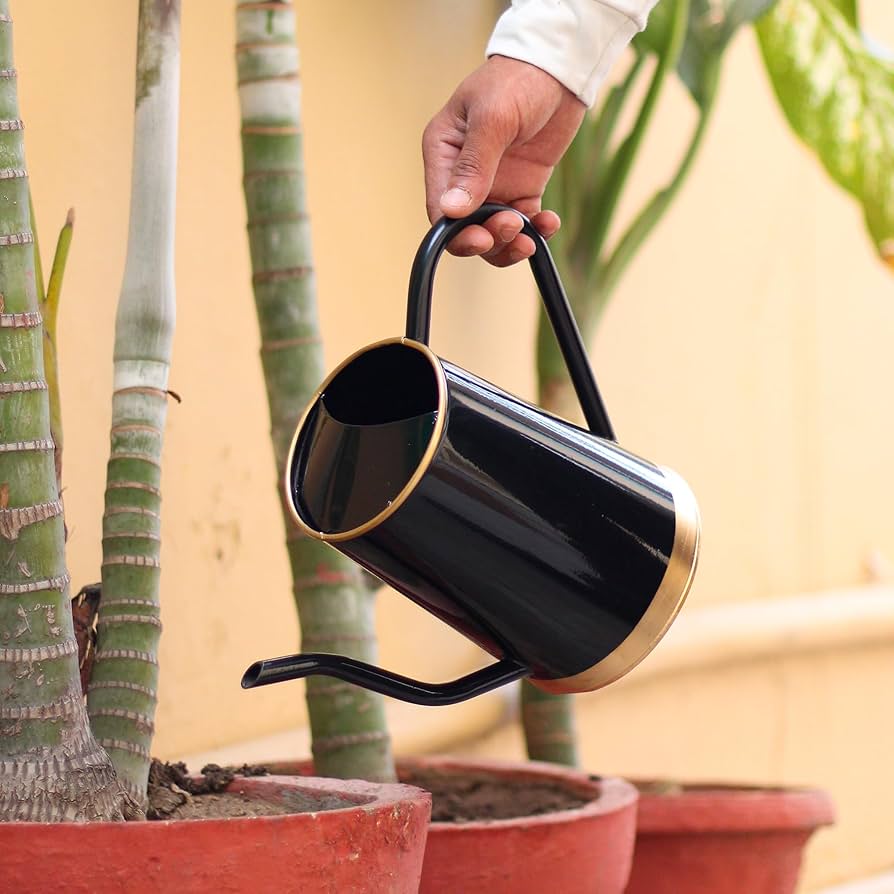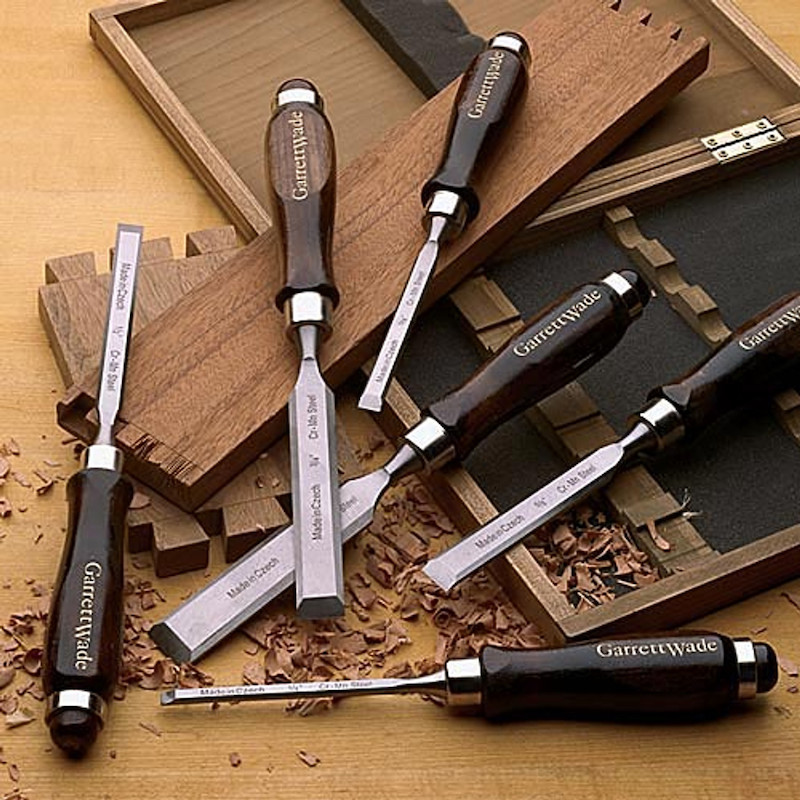
Essential Woodworking Hand Tools for Skilled Craftsmanship
Introduction to Woodworking Hand Tools
In the art of woodworking, hand tools hold a special place. They allow for precision that power tools can’t match. Whether you’re a seasoned woodworker or just starting, knowing your woodworking hand tools is crucial. These tools give you full control over every cut, shave, and joint, making your work a true craft.
To begin, familiarize yourself with the basics: saws, chisels, planes, and measuring tools. These are the essentials for most woodworking projects. They help you measure, cut, shape, and smooth wood to perfection. With proper skills, these tools can produce works of art from simple wood boards.
When starting a project, choose the right tool for the job. It makes the process smooth and safe. Quality also matters. Good woodworking hand tools can last a lifetime if you take care of them.
In summary, woodworking hand tools are the backbone of fine woodworking. They connect you to the material in a way machines cannot. They bring out the best in your ability, helping you create with accuracy and beauty. Now let’s delve deeper into each type of hand tool and its use in woodworking.
The Hand Saw Family: Types and Uses
The hand saw is a fundamental tool in woodworking. Mastering different types of saws can offer unparalleled versatility in your projects. Let’s explore some of the core saws and their specific uses in the workshop.
Crosscut Saws
Crosscut saws are designed to cut across the wood grain. They have teeth like knives to slice through fibers easily. These saws are ideal for making clean, straight cuts.
Rip Saws
Rip saws work along the wood grain, aiding in cutting boards to width. Their teeth act like chisels, chipping away at the wood. Rip saws are essential for sizing lumber.
Back Saws
Back saws come with a stiff, reinforced back. They allow for precise cuts and are perfect for joinery work. These include tenon saws and dovetail saws. Their fine teeth make tight and accurate joins.
Coping Saws
Coping saws have thin blades and deep frames. They are excellent for intricate cuts and curves. They are key for detailed work, like coping joints in trim.
Hacksaws
While not always used for woodworking, hacksaws have fine teeth and are ideal for metal. However, they can be handy for cutting hardware used in woodworking.
Keyhole Saws
Keyhole saws, also known as compass saws, are made for cutting small, interior shapes. They also navigate tight spaces well.
Selecting the right hand saw depends on your task. Always consider the grain direction and the precision required. Remember to keep these woodworking hand tools sharp for the best performance. Sharp saws reduce effort and enhance safety. They also give smoother cuts, making your work look professional.
Chisels and Gouges: Shaping Wood by Hand
Chisels and gouges are vital for skilled woodworking. These tools carve, shape, and clean cuts in wood. Chisels have sharp, straight edges. Woodworkers use them to pare, shape, and chop wood. They come in various sizes and shapes for different tasks.
Bevel-Edge Chisels
Bevel-edge chisels feature angled sides. They reach into tight corners easily. Their design makes them versatile for intricate work.
Mortise Chisels
Mortise chisels have thick, robust blades. They remove large wood chunks for mortise and tenon joints. They withstand heavy mallet blows.
Carving Chisels and Gouges
Carving chisels have finer blades than general chisels. Gouges have a curved cutting edge. They scoop out wood, perfect for creating curves and hollows.
Corner Chisels
Corner chisels have an L-shaped edge. They cut square holes and corners. Their shape ensures clean and sharp angles.
Choosing the right chisel or gouge comes down to the job. Consider the wood type and the detail level needed. Keep these woodworking hand tools sharp for the best results. Use honing guides and sharpening stones to maintain the edge. A sharp tool provides control and precision. It also makes woodworking safer and more enjoyable. Use these tools with care, and they will help shape your projects beautifully.
Measuring and Marking Tools for Precision
Accurate measurements are crucial in woodworking. Measuring tools ensure every cut fits perfectly. Here are some essential tools for precision.
Tape Measures
A tape measure is a must-have in any workshop. It helps you gauge lengths quickly and accurately. It’s perfect for large-scale projects. Look for one that’s durable and easy to read.
Rulers and Straightedges
Rulers and straightedges give straight lines for cutting or marking. Opt for metal ones as they are more durable. Precision in measurements equals precision in woodworking.
Squares
Squares check the accuracy of angles and corners. A try square is great for 90-degree angles. For varied angle work, an adjustable square or bevel gauge is key.
Marking Gauges
Marking gauges scribe lines parallel to an edge. They are essential for layout work. Ensure your gauge has a sharp pin for clean, exact lines.
Calipers
Calipers measure thickness and diameters with precision. Digital models offer instant readings. They help you confirm your work is to spec.
Marking Knives
Marking knives give you exact lines for precision cuts. A sharp knife edge offers more accuracy than a pencil line. It’s vital for joinery work.
All these woodworking hand tools help you achieve perfection. Measure twice, cut once is a woodworker’s mantra. Proper use of these tools makes complex projects simpler. They help reduce errors and improve the quality of your work. Keep them close and well-maintained for the best results. Accurate measuring and marking are the blueprints for outstanding craftsmanship.
Essential Planes for Smooth Finishing
In woodworking, achieving a smooth finish is paramount, and this is where planes come in. Planes are designed to shave off thin slices of wood, ensuring surfaces are flat and smooth before final sanding. Let’s take a closer look at some essential planes you need in your toolkit for smooth finishing.
Bench Planes
Bench planes are the most common type of plane used for smoothing and flattening wood. They come in various sizes, with the length of the plane determining its purpose. Longer planes are excellent for leveling, while shorter ones are best for finer, more precise work.
Block Planes
Block planes fit in one hand and are perfect for quick tasks. They trim end grain and do small corrections. Their compact size makes them easy to maneuver.
Jack Planes
Jack planes are versatile and can do a bit of everything. They are good for smoothing out rough lumber and for preliminary smoothing before using finer planes.
Smoothing Planes
Smoothing planes make your wood feel glass-like. They remove any small imperfections left from earlier planing. Having a well-tuned smoothing plane is key to a fine finish.
Jointer Planes
Jointer planes are the longest planes and they ensure edges are straight and true. If you’re joining boards side by side, these planes are crucial.
Using planes requires practice, but once mastered, they are invaluable woodworking hand tools. Always keep the blade sharp for the best results, and take light passes to avoid gouging the wood. Planes not only make your work look better, but they also make it fit together more tightly and accurately.
Hammers and Mallets: Striking Tools in Woodworking
Hammers and mallets are crucial for many woodworking tasks. They’re key for assembling and disassembling projects. Craftsmen need these tools for their striking power. They also help with chisels to shape wood joints. We’ll explore their various types and applications.
Claw Hammers
Claw hammers are common in woodworking shops. Their dual-purpose design nails and removes nails with ease. The claw side pulls nails out, while the flat head drives them in.
Ball Pein Hammers
Ball pein hammers shape metal, a useful skill in woodworking. They’re perfect for crafting metal hardware that goes into wood, like hinges.
Mallets
Mallets offer a softer blow than hammers. They’re made from wood or rubber. Woodworkers use mallets with chisels to avoid damaging the tools or workpiece.
Sledgehammers
Sledgehammers are not common but are useful for heavy-duty tasks. They’re ideal for breaking down large pieces of wood or demolition tasks within a project.
Dead Blow Hammers
Dead blow hammers minimize rebound when striking. They are great for adjusting parts or fitting joints snugly together without causing damage.
Woodworkers should pick the right hammer or mallet for their task. The wood type and the job’s delicacy matters. Keep these striking tools handy, as you will often reach for them. Strike true and with care for the best craftsmanship results. Quality striking tools withstand the test of time and use. With these woodworking hand tools, you can rely on your own strength to shape and build with precision.
Sharpening Tools: Keeping Your Tools in Top Condition
Sharp tools are vital in woodworking. They make cutting easy and keep the work precise. Dull tools can ruin your projects and are dangerous too. In this section, we’ll look at the key sharpening tools. Each is important to keep your woodworking hand tools in their best shape.
Sharpening Stones
Sharpening stones, or whetstones, are the most common sharpening tools. There are various grits to choose from. Start with a coarse grit and move to a fine grit for a sharp edge.
Honing Guides
Honing guides hold tools at the right angle while sharpening. They make the process simple and consistent. Every woodworker should learn to use them.
Strops
After sharpening, strops polish the edge to a mirror-like finish. They also straighten any micro-burrs left behind. Leather or canvas strops can be used with a polishing compound.
Diamond Plates
Diamond plates are durable and stay flat over time. They work faster than traditional stones. Use them to flatten your whetstones or for quick touch-ups on tools.
Oil and Water
Sharpening oils and water prevent stones from clogging. Oil works with oil stones, while water works with water stones. Keep them handy when sharpening.
Every woodworker must know how to sharpen their tools. It’s a skill that improves with practice. Remember to regularly hone your tools for the best results. Dull tools mean more work and less fun in the workshop. So, keep them sharp, and enjoy woodworking even more.
Clamps and Vises: The Importance of a Secure Workpiece
When working with woodworking hand tools, securing your workpiece is vital. Clamps and vises are the go-to tools for this job. They hold the wood still while you measure, cut, and shape it. Having your wood move mid-cut not only ruins precision but can be dangerous.
Clamps come in many forms:
- Bar clamps apply pressure along a bar, great for large pieces.
- C-clamps have a fixed shape and can fit various thicknesses.
- Hand screws adjust to different angles, useful for odd-shaped pieces.
- Spring clamps are quick to use for light tasks.
Vises are mounted to your workbench. They free both your hands for the task. There are several types of vises:
- Woodworking vises grip the wood without damaging it.
- Metalworking vises are stronger and suited for heavy-duty work.
- Bench vises hold the wood from the sides or top.
Always choose the right clamp or vise for your project. Their grip strength and size should match the workpiece. Tightening them just right is key. Too loose, and your wood moves. Too tight, and you risk damaging the wood or the tool. Secure workpieces show in the final product’s quality. With well-clamped wood, your cuts and joins will meet just right. Remember, your safety and project’s success depend on a solid setup. Use clamps and vises to achieve both.

The Right Toolkits: Innovative Cat Hand Tools for DIY Projects
Essential Cat Hand Tools for DIY Enthusiasts
Every DIY enthusiast knows the importance of having the right tools. Cat hand tools are essential for many reasons. They are sturdy, reliable, and come in various types. Here are some must-have Cat hand tools that should be in every DIYer’s toolkit.
Screwdrivers
A set of Cat screwdrivers is crucial for basic tasks. You need them for screws in electronics, appliances, and furniture. Look for sets with multiple head types.
Hammers
Every toolbox needs a solid Cat hammer. It’s useful for driving nails into wood or breaking apart materials. Choose one with a comfortable grip.
Pliers
Cat pliers help grip and twist wires and small components. Needle-nose and adjustable pliers are especially useful.
Wrenches
Wrenches are vital for bolts and nuts. Cat offers adjustable wrenches that fit various sizes, making them versatile.
Tape Measure
A reliable Cat tape measure ensures your measurements are precise. It’s a basic tool for cutting or aligning materials correctly.
Utility Knife
For cutting through materials, a sharp Cat utility knife is essential. Always handle with care and use safely.
Level
A level guarantees your projects are even and aligned. Cat levels come in various sizes for different projects.
Tool Bag or Box
Lastly, keep your Cat hand tools organized in a tool bag or box. It makes transport and storage easier.
These tools are just the start for a well-equipped DIY toolbox. They help with a wide range of projects and improve the DIY experience. Make sure you choose Cat hand tools designed for durability and comfort. They should last through many projects, helping you build, repair, and create with confidence.
Advantages of Using Cat Hand Tools for Home Repairs
When tackling home repairs, choosing the right tools can make all the difference. Cat hand tools offer key advantages for both novice and experienced DIYers. Here are four main benefits:
Durability
Cat hand tools are known for their robust construction. They withstand heavy use and harsh conditions, making them a dependable choice for any home repair job.
Ergonomic Design
Comfort is vital when working with tools for extended periods. Cat hand tools have ergonomic handles and designs that reduce fatigue and increase grip, making your work easier.
Versatility
With a versatile selection, Cat hand tools are suitable for a vast array of tasks. Whether tightening bolts or cutting materials, there’s a Cat tool designed for the job.
Value for Money
Investing in Cat hand tools means getting quality at a fair price. These tools last longer, meaning you save money in the long run by not having to replace them frequently.
By choosing Cat hand tools for home repairs, DIYers benefit from a blend of durability, comfort, versatility, and value that is hard to match. These tools not only make the job easier but also ensure it’s done right.
Top Cat Hand Tools for Precision Work
When your DIY project demands exactness, Cat hand tools are your go-to. Precision work requires not just skill, but also the right tools that allow you to work with fines substances or on minuscule parts. Below we dive into a selection of Cat hand tools crafted for those precise tasks.
Precision Screwdrivers
For intricate electronics or tiny fasteners, precision screwdrivers are a must. Cat precision screwdrivers come in sets with various sizes and head types, giving you the right fit for any small screw.
Torque Wrenches
Accurate bolt tightening is crucial in many projects. Cat torque wrenches offer exact tension control to prevent overtightening. The clear scale readings ensure accurate application of force.
Calipers
Measuring dimensions accurately is key for precision work. Cat calipers deliver pinpoint measurements for internal, external, depth, and step dimensions, ensuring your parts fit perfectly.
Sockets and Ratchets
When working in tight spaces, Cat sockets and ratchets are essential. Their fine-tooth mechanism allows for small turns, making it easier to work in confined areas.
Each of these tools embodies Cat’s promise of quality and precision. With resilient materials and meticulous design, Cat hand tools help you achieve that high degree of accuracy required for your specialized projects. Remember, when it comes to precision work, the right tools don’t just make the job possible – they make it a success.
Durability and Quality Comparison of Cat Hand Tools
Durability and quality are key when choosing hand tools for your DIY projects. Cat hand tools stand out for their robust construction and superior craftsmanship. When compared to other brands, Cat tools often rise to the top due to their long-lasting materials and attention to detail in design.
Long-Lasting Materials
Cat hand tools use high-grade steel and other durable materials. This ensures they withstand repeated use and resist wear over time. The choice of materials is a critical factor that contributes to the longevity of these tools in any DIYer’s kit.
Solid Construction
One of the distinctive features of Cat hand tools is their solid construction. Each tool is built to handle the tough demands of various projects. This solid build minimizes the risk of damage or breakage even under heavy use.
Attention to Detail
Cat hand tools are designed with meticulous attention to detail. Every edge, grip, and moving part is crafted to ensure optimal performance. This precision results in a higher-quality finish and more accurate work.
Performance Under Pressure
Another important aspect of hand tools is their ability to perform under pressure. Whether it’s enduring the high torque of a stubborn bolt or maintaining precision in delicate tasks, Cat tools consistently deliver reliable results.
In summary, hand tools offer exceptional durability and quality compared to other brands. They are crafted with longevity in mind, using durable materials, solid construction, and with an eye for detail. These tools are designed to perform reliably, even in high-pressure situations, ensuring that every DIY task is accomplished effectively and efficiently.
Specialty Cat Hand Tools for Unique DIY Needs
When your DIY projects call for specialized tasks, you need tools designed for those unique challenges. Cat hand tools include a range of specialty items that are perfect for the jobs that require a more targeted approach. Here’s a list of special hand tools that could be invaluable for your next unique DIY project:
Specialty Saws
Whether it’s for cutting intricate shapes or making flush cuts, Cat offers specialty saws with precision blades that make clean cuts every time. These saws are engineered for specific materials and applications, ensuring that you always have the right tool for the job.
Rivet Guns
For projects involving sheet metal or fabrics, a Cat rivet gun provides a durable solution for joining materials. Easy to operate and designed for comfort, these rivet guns make a tough job seem simple.
Pry Bars
Sometimes you need leverage to move heavy objects or disassemble parts. Cat pry bars are made with high-quality steel to give you that leverage without bending or breaking.
Wire Strippers
Electrical DIY tasks can be delicate. Cat wire strippers are designed for precision stripping of various wire sizes, making electrical work safer and more efficient.
By equipping yourself with these special Cat hand tools, you can tackle those unique DIY needs with confidence. Each tool is crafted to Cat’s high standards, ensuring it stands up to the task and delivers the results you’re looking for in your project.
Safety Features in Cat Hand Tools for DIYers
When engaging in DIY, safety can’t be overlooked. Cat hand tools are built with safety in mind. Here’s how Cat hand tools keep you safe during your projects:
Non-slip Handles
Cat hand tools feature non-slip handles for a secure grip. This reduces the chance of tools slipping out of your hands.
Safety Locks
Some Cat tools come with safety locks. This feature prevents accidental activation, especially for cutting tools.
Insulated Grips
For electrical work, Cat offers tools with insulated grips. This helps protect you from electric shocks when working with wires.
Rounded Corners
Tools with sharp corners can cause injuries. Cat tools are designed with rounded corners to minimize this risk.
Remember, while hand tools come with these safety features, always follow best practices. Wear safety gear and read the tool instructions before starting your project.
How to Choose the Right Cat Hand Tool for Your Project
Selecting the correct Cat hand tool for your DIY endeavor is crucial. Here are some guidelines to help you choose wisely:
Consider the Task at Hand
First, think about the job you will do. Each task may need a different Cat tool.
Assess the Tool’s Size and Weight
Make sure the tool feels right in your hand. It should not be too heavy or too large.
Look for Multi-functionality
A Cat tool that has several uses can be a smart pick. It offers more value for money.
Check for Compatibility
Some tasks may need tools that fit with what you already own. Ensure the new Cat tool works with your current set.
Read Reviews and Recommendations
Seek out feedback from others. Reviews can help you decide if a Cat hand tool is right.
Value Quality Over Price
Don’t choose the cheapest option. A high-quality Cat tool will last longer and work better.
By taking these points into account, you can make an informed decision. This ensures that your Cat hand tools meet your project’s demands and assist in achieving the best results.
Maintaining Your Cat Hand Tools: Tips and Tricks
Maintaining your Cat hand tools is crucial to ensure they last through countless DIY projects. Here’s how you can keep them in top shape:
Keep Them Clean
After each use, wipe your tools clean of any dirt, dust, or debris. This prevents build-up that can impair function.
Store Them Properly
Tools should be stored in a dry place. A Cat tool bag or box shields them from the elements and keeps them organized.
Regularly Check for Wear and Tear
Inspect your tools regularly for any signs of damage. Look for cracks, rust, or loose parts and address them promptly.
Lubricate Moving Parts
Apply lubricant to hinges and moving parts to ensure smooth action. Be sure to use the right type of lubricant for the material.
Sharpen Cutting Tools
Blades and cutting edges should be kept sharp. Use a sharpening stone or tool appropriate for the edge you’re maintaining.
Tighten Loose Handles and Fastenings
Check the handles and fastenings on your Cat tools. If they’re loose, tighten them up to avoid accidents or tool malfunctions.
Following these steps will keep your hand tools reliable and ready for any task. With simple care, your tools will continue to perform at their best, making your DIY projects both successful and enjoyable.
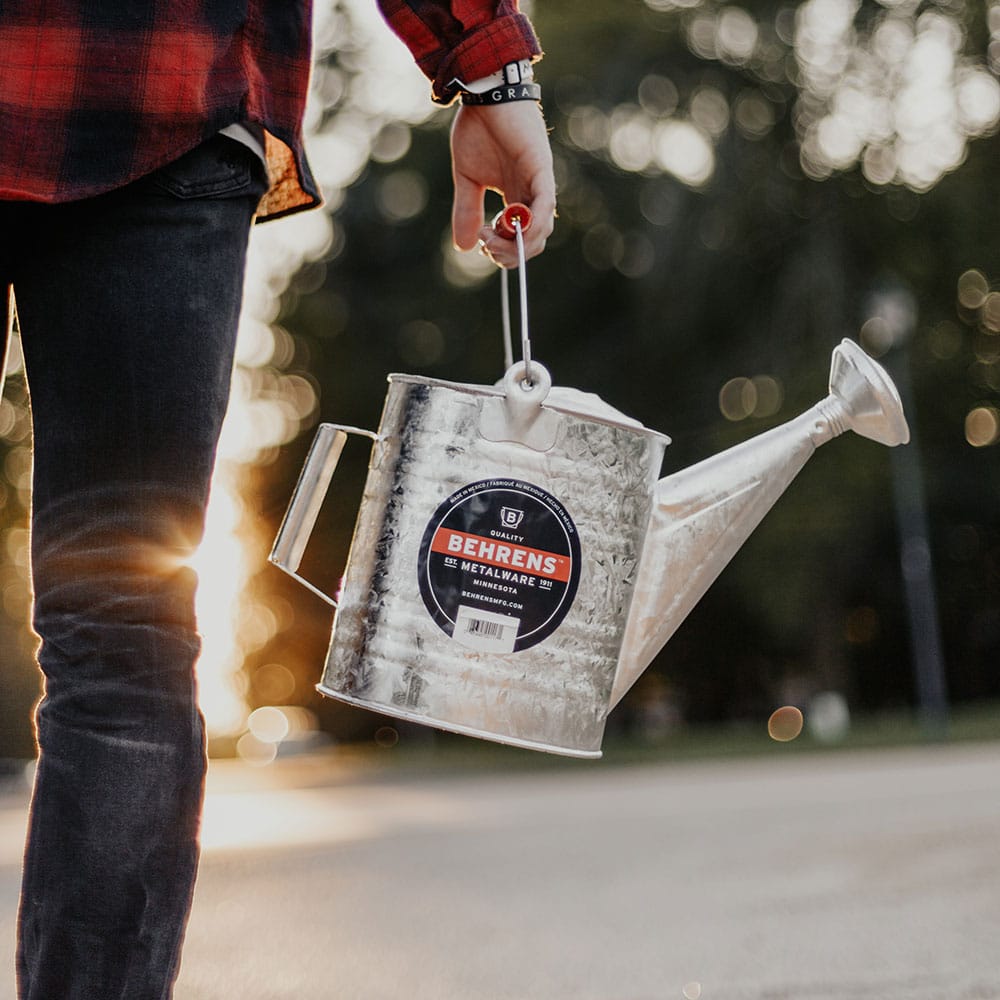
The Efficient Watering: A 2 Gallon Galvanized Watering Can
Introduction to Galvanized Watering Cans
Galvanized watering cans offer a blend of tradition and practicality for gardeners. The term ‘galvanized’ refers to a protective zinc coating over iron or steel. This coating prevents rusting, making these cans durable for garden use. A 2 gallon galvanized watering can is a common size, balancing capacity with manageability. Gardeners prize them for their longevity and classic look. These cans often come with a spout and a handle. Some have a removable spray rose to gently water young or delicate plants. An angled spout allows for precise watering, reaching the soil directly. The handle design ensures a comfortable grip even when the can is full. Investing in a galvanized can is a practical choice for any gardener, from novices to experts.
Benefits of Using a 2 Gallon Galvanized Watering Can
Choosing a 2 gallon galvanized watering can comes with several advantages for gardeners. Here are some benefits that highlight why this size and material is a favored choice among those with a green thumb:
- Adequate Volume: A 2 gallon capacity strikes the perfect balance. It holds enough water to hydrate several plants without frequent refills. Yet, it is not too heavy to carry and maneuver around the garden.
- Rust Resistance: Thanks to the galvanization process, these cans resist rust and corrosion. They outlast others made from less durable materials, enduring the test of time and weather.
- Steady Watering: The design of these cans often includes a long spout for consistent water flow. This creates a steady stream, allowing for thorough watering right to the roots without splashing and soil erosion.
- Versatility: The removable spray rose attachment adds to the can’s versatility. You can opt for a gentle sprinkle or a direct pour, adjusting to the needs of different plants easily.
- Aesthetic Appeal: The classic design of a galvanized can adds a touch of elegance to your garden tools. They often feature in garden decor, blending functionality with style.
- Ergonomic Handling: With a well-designed handle, these cans provide comfort and ease of use. Good balance reduces strain on the wrists and arms, even when the can is full.
- Eco-Friendly Choice: Unlike plastic cans, metal is recyclable and eco-friendlier. Using a galvanized can reduces plastic consumption and waste, aligning with sustainable gardening practices.
Remember, the benefits of a 2 gallon galvanized watering can go beyond just watering. They represent a long-term investment in your gardening habits. When choosing your watering tools, consider these advantages to find the perfect match for your garden.
How to Choose the Right Galvanized Watering Can
Choosing the right 2 gallon galvanized watering can is crucial for your gardening success. Here are key factors to consider when making your selection:
- Material Quality: Look for high-quality galvanized steel. This ensures your can lasts longer and resists rust effectively.
- Design and Comfort: Choose a can with an ergonomic handle design. It should feel comfortable to hold and easy to tilt for pouring.
- Spout Length and Shape: A long, angled spout helps target water flow. It reaches the base of plants and avoids foliage.
- Detachable Spray Rose: Check if the can has a removable spray rose. This is useful for watering delicate plants gently.
- Size and Weight: Ensure the can is easy to carry when full. It should not be too heavy, preventing strain on your arms.
- Balance and Stability: A good watering can should have a stable base. It should sit flat on the ground when not in use.
- Style: You may want a can that looks good in the garden. Choose one that fits your aesthetic preferences.
Take time to find a can that meets these criteria. The right choice will make watering your garden a pleasure.
Tips for Maintaining Your Galvanized Watering Can
Maintaining a 2 gallon galvanized watering can is simple but essential. Proper care extends its life and performance. Here are some tips to keep your can in great shape:
- Regular Cleaning: After each use, rinse out any remaining water. This prevents mineral buildup and residue.
- Dry Storage: Store your can in a dry place, upside down or with the spout facing down. This ensures no water remains that might cause rust.
- Remove Sediments: Occasionally, fill the can with a mixture of water and vinegar. Swish it around to remove any sediment or buildup inside.
- Inspect for Damage: Periodically check for any signs of damage. Look at the handle, spout and body for dents or wear.
- Gentle Use: Avoid dropping your can or knocking it against hard surfaces. Gentle use prevents dents and keeps the zinc coating intact.
- Polish the Surface: You can polish the surface of your can with a soft cloth. It maintains the shine and aesthetic appeal of the metal.
- Avoid Chemicals: Don’t use harsh chemicals or abrasive cleaners. These can damage the galvanized coating over time.
By following these simple maintenance steps, you ensure that your 2 gallon galvanized watering can remains a reliable and stylish tool for your gardening tasks.
Watering Techniques for Different Plants
To effectively use a 2 gallon galvanized watering can, tailor your approach to each plant type.
- For Seedlings: Use a gentle stream. Aim the water at the base, not the leaves.
- For Vegetables: Water deeply to reach roots. Early morning is the best time.
- For Potted Plants: Tilt your can. Give a steady pour to avoid splashing out soil.
- For Shrubs and Trees: Circle around the dripline. Water slowly to soak the area well.
- For Succulents: Less frequent. Allow the soil to dry between watering.
- For Flower Beds: Use a spray rose for an even sprinkle. Avoid wetting foliage too much.
Remember, consistent watering is key. Over-watering can be as harmful as under-watering. Root health is crucial. Ensure the water penetrates the soil to encourage strong root growth. Adjust your techniques as plants grow and seasons change. Always consider the weather and soil moisture before watering. The right method with your 2 gallon galvanized watering can will help your plants thrive.
The Durability and Longevity of Galvanized Cans
When it comes to gardening tools, durability matters. A 2 gallon galvanized watering can offers gardeners both durability and longevity. The reason lies in its construction.
- Zinc Coating: The layer of zinc that covers these cans provides a shield against rust and corrosion.
- Heavy-Duty Material: Galvanized cans are made of steel, known for its strength and resilience.
- Protective Finish: The galvanizing process gives the can a robust finish that withstands weather extremes.
Years of Service: With good care, these cans can last many years without showing signs of wear. Gardeners appreciate this longevity, as it means fewer replacements. Investing in a galvanized can could save you money over time.
- Weather Resistance: They stand up well to rain, wind, and sun exposure.
- Tough Handling: These cans can tolerate rough treatment that comes with regular use. They resist denting and handle drops better than plastic counterparts.
Their lasting nature makes them a sustainable choice. They keep plastic watering cans out of landfills. For those who value durability, a 2 gallon galvanized watering can is the way to go.
Comparing Galvanized Cans with Other Watering Solutions
When selecting the right tool for hydrating your garden, it’s important to compare options.
- Plastic Watering Cans: Often more affordable and lighter than metal ones. Yet they may not last as long due to sun damage and cracking.
- Rubber Hoses: Offer ease for watering large areas. But they lack the precision a can with a spout provides. Also, hoses can be cumbersome to store.
- Automatic Sprinklers: Convenient for hands-free watering. However, they may not target water exactly where it’s needed and can waste water.
- Drip Irrigation Systems: Great for water conservation and reaching roots directly. They require an initial setup and maintenance, though.
- Self-Watering Pots: Ideal for busy gardeners. But they offer less control over the amount of water each plant receives.
Using a 2 gallon galvanized watering can has its unique benefits. It blends the precision of hand-watering with the durability of metal. While each solution has its place, a galvanized can is a reliable, eco-friendly choice for attentive gardeners.
Creative Uses for Galvanized Watering Cans in Gardening
Galvanized watering cans are versatile beyond mere watering tasks. Here are some creative ways to use a 2 gallon galvanized watering can in your garden:
- As a Planter: Convert it into a charming planter. Drill some drainage holes in the bottom, fill it with soil, and plant your favorite flowers or herbs.
- For Measurement: Use your can to measure the right water amount for plants that need precise watering.
- Decor Piece: Adorn your garden by repurposing the can as an accessory. It can hold garden tools or showcase seasonal decor.
- Garden Art: Get artistic. Paint it or stick on decals to create a unique decorative element.
- Watering Scheduler: Mark the side of the can with levels to know how much you water each time.
- Irrigation Helper: Fill the can and let it slowly seep into the ground near a new sapling.
- Seedling Dibber: Use the spout to poke perfect holes in the soil for seedlings.
This 2 gallon galvanized watering can is more than a tool. It’s an opportunity to both beautify and functionally enhance your garden area.
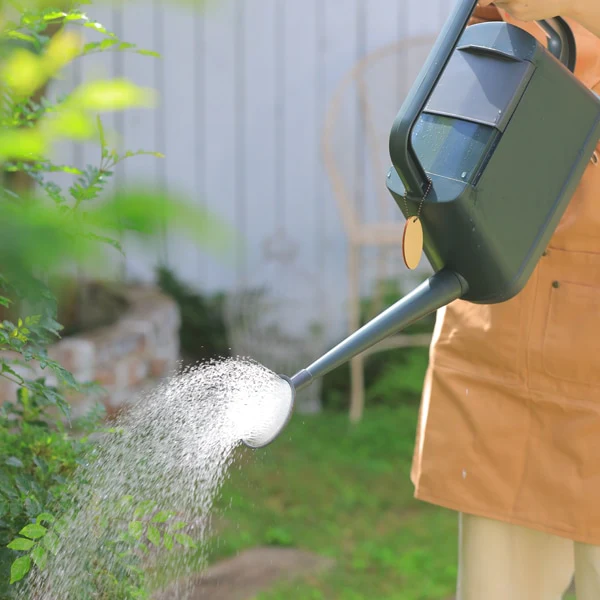
Your Eco-Friendly Watering: A Green Plastic Watering Can Guide
The Importance of Eco-Friendly Watering Practices
Eco-friendly watering practices play a critical role in sustainable gardening. By choosing a green plastic watering can, gardeners can significantly reduce their ecological footprint. Here are key reasons why these practices are vital.
Conservation of Resources
Using eco-friendly watering cans helps save water and energy. Green designs often include features that limit water waste. This is crucial for preserving our planet’s limited water supplies.
Reduction of Chemical Use
Traditional plastic can release harmful chemicals into the soil and water. Green plastic watering cans are made from safer materials. They minimize the risk of contaminating our environment.
Decreasing Plastic Waste
Plastic waste is a major environmental issue. Choosing a watering can made from recycled or sustainable materials can reduce this waste. It helps keep plastics out of landfills and oceans.
Encouraging Biodiversity
Healthy watering practices sustain plant life without damaging surrounding ecosystems. They support biodiversity, which is essential for a balanced environment.
Lower Carbon Footprint
The production of traditional plastics involves high carbon emissions. Eco-friendly watering cans are usually made with processes that emit less carbon dioxide. This helps fight climate change.
Green plastic watering cans are more than a gardening tool. They are a choice for a healthier earth. We must adopt these practices to support a sustainable future.
What Makes a Watering Can ‘Green’
Defining what makes a watering can ‘green’ involves several aspects. Firstly, it refers to the materials used in the can’s production. They should be eco-friendly, such as recycled plastic or biodegradable materials. Secondly, the design should minimize water waste. Features like precise spouts and controllable flow rates contribute to this goal. Lastly, a ‘green’ watering can’s production should have a reduced carbon footprint. This means less energy spent and lower emissions generated during manufacturing.
In summary, a green plastic watering can must:
- Be made from sustainable or recycled materials.
- Prevent water waste through efficient design.
- Be produced with low energy consumption and emissions.
By emphasizing these features, a watering can earns the title of being environmentally conscious, or ‘green’. Each aspect contributes to lessening our environmental impact, ensuring that our gardening practices support a healthier planet.
Material Matters: Types of Eco-Friendly Plastics
When choosing a green plastic watering can, understanding the types of eco-friendly plastics is key. Here’s what to look for:
Recycled Plastics
These plastics come from used materials that are processed and remade into new products. A watering can made from recycled plastics not only reduces waste but also conserves resources by repurposing existing materials.
Bioplastics
Manufactured from renewable biological resources, bioplastics can break down faster than traditional plastics. Watering cans made from bioplastics leave a smaller carbon footprint and help prevent long-term pollution.
Plant-Based Plastics
Similar to bioplastics, these are derived from plants like corn or sugarcane. They are known for their reduced impact on the environment during both production and disposal phases.
Oxo-Degradable Plastics
This type of plastic is designed to degrade in the presence of oxygen and light. Although this sounds ideal, the fragments can remain in the environment for a long time. They are not the top choice for truly green products.
Each type of eco-friendly plastic has its pros and cons. It’s important to choose one that aligns with your gardening values and the commitment to protecting the environment.
Features to Look for in a Sustainable Watering Can
Choosing a green plastic watering can that is truly sustainable involves more than material selection. While eco-friendly plastics play a huge part, other features must also be taken into consideration to ensure that you are watering your plants in the most environmentally responsible way. Here’s a list of essential features to keep in mind when shopping for your green plastic watering can:
- Ergonomic Design: Comfort matters, as it ensures efficient use of water without strain.
- Adjustable Flow: Look for cans with adjustable nozzles that can control water flow. This saves water.
- Durability: A more durable can will last longer and cut down on plastic waste over time.
- Measurement Marks: These can help you determine the exact amount of water, reducing waste.
- Easy to Clean: A design that is easy to clean will prevent algae growth and maintain can quality.
- Lightweight: A lightweight can is easier to carry and reduces fatigue.
Finding a green plastic watering can with these features will aid you in achieving eco-friendly watering practices. It will ensure you’re not just using sustainable materials but also consciously saving water, reducing strain on both your body and the environment, and extending the life of your gardening tools.
Considering the Lifecycle: From Production to Disposal
When selecting a green plastic watering can, it is vital to consider its entire lifecycle. How the product is made, used, and disposed of affects its overall environmental impact. Here are key lifecycle stages you should be aware of:
Production
The production process should be eco-friendly. Manufacturers should use green energy and sustainable materials. This reduces pollution and conserves resources.
Use
During its use, the watering can should save water and last long. Longevity means fewer replacements and less waste. Features like adjustable flow can help conserve water.
Disposal
Finally, consider how the watering can will be disposed of. Ideally, the materials should be recyclable or biodegradable. This ensures the can will not harm the environment at the end of its life.
Selecting a green plastic watering can with a responsible lifecycle reflects a commitment to sustainability. It shows you care about every environmental aspect, from production to disposal. Such a choice leads to long-term benefits for the planet.
The Best Green Plastic Watering Cans in the Market
With the knowledge of what makes a watering can truly green, let’s dive into the options available on the market. Here is a list of some of the best green plastic watering cans you can find, each meeting the strict criteria of eco-friendliness while providing practical benefits for your gardening needs.
- The Recycled Ranger: This watering can is made entirely from recycled materials. It is sturdy, has an adjustable nozzle, and ergonomic handles.
- The Biodegradable Buddy: Made with bioplastics, this can is lightweight and will biodegrade under the right conditions, making it a great choice for the environmentally conscious gardener.
- The Plant Power Pourer: This can is crafted from plant-based plastics and features measurement marks for precise watering, and its design is geared toward comfort and efficiency.
- The Durable Droplet: Designed to last, this model is made from high-quality recycled plastics and features a durable structure that resists wear and tear.
- The Eco Ergo Can: As its name suggests, it offers an ergonomic design with an adjustable flow rate, combining comfort with water conservation.
These watering cans are not only made from green materials but also boast features that enhance their sustainability, like durability and adjustable flow for water conservation. When looking for a green plastic watering can, consider these options that align with the goal of minimizing environmental impact while maintaining your garden’s health and beauty.
Tips for Maintaining Your Eco-Friendly Watering Can
Maintaining your eco-friendly watering can is crucial for its longevity and performance. Here are practical tips to keep your green plastic watering can in top shape:
- Regular Cleaning: After each use, rinse your can to remove any residue. This prevents buildup and keeps the can hygienic.
- Proper Storage: Store your can upside down in a dry area. This avoids water collection and stops algae growth.
- Inspect for Damage: Check for cracks or leaks often. Early detection means you can repair before issues get worse.
- Gentle Use: Handle your can with care. Rough use may cause damage and shorten its life.
- Avoid Harsh Chemicals: When cleaning, use mild soap. Harsh chemicals can harm eco-friendly plastics.
- Recycle When Needed: If your can reaches its end of life, recycle it properly. This step keeps the eco-friendly cycle going.
By following these tips, you ensure that your green plastic watering can remains a reliable tool in your garden. It also stays true to your commitment to sustainability and responsible gardening practices.
Where to Buy Your Green Plastic Watering Can
Finding a place to buy your green plastic watering can is easy when you know where to look. Garden centers, eco-friendly stores, and online marketplaces are great starting points. Here are some tips to help you in your search:
- Local Garden Centers: Visit nearby garden centers. They often carry eco-friendly products. Ask staff for green watering cans.
- Eco-Friendly Stores: Some stores focus on eco-friendly goods. They are likely to have green watering cans.
- Online Marketplaces: Websites offer a wide range. Look for green plastic watering cans with good reviews.
- Direct From Manufacturers: Go to the maker’s website. Some offer direct purchases to customers.
- Farmer’s Markets: At times, local markets have garden supplies. They might have eco-friendly watering cans.
Before buying, check the can’s materials and features. Ensure they match eco-friendly standards. Reading reviews and comparing prices will also guide you. Pick a watering can that fits your eco-friendly gardening needs.

The Watering Can for Gardeners: Innovative Watering Can Designs
Evolution of Watering Can Designs
The watering can is an essential tool for gardeners. Over time, its design has seen significant changes.
Historical Overview
In historical times, gardeners relied on simple containers to water plants. These were often cumbersome and inefficient. However, the basic concept of gardening tools can dates back centuries. It began as a simple container, likely made from animal hides or natural materials. As metalworking improved, the watering can evolved into more durable metal forms. These provided better control over water distribution.
Modern Advancements
Modern advancements in the design of the watering can focus on convenience and functionality. They feature lightweight materials and ergonomic designs. This makes long gardening sessions less straining. Today’s cans might include removable sprayer attachments. They aid in addressing different watering needs. Some have measurements indicated on the side for precise watering. Innovations like collapsible designs also save storage space. The evolution celebrates a union between tradition and innovation, ensuring the watering can remains an indispensable garden tool.
Ergonomic Features for Comfort
When choosing the watering can, comfort is a key consideration. Ergonomic features make gardening tasks easier and more enjoyable. Manufacturers now focus on designs that reduce strain and improve the ease of use.
Handle Design and Grip
A good handle is central to a comfortable watering experience. The best watering cans feature handles that are easy to hold. They should fit snugly in your hand. This prevents slippage and eases the strain on your fingers and wrist. Rubber grips or textured handles provide added security and comfort. An ergonomic handle helps you maintain control, even when the can is full and heavy.
Weight Distribution
The weight distribution of gardening tools can affects how it feels when you carry and pour. A well-designed can, even when filled with water, should not feel overly heavy on one side. It should allow for a balanced distribution of weight. Look for a can with a lower center of gravity. It should be capable of holding a good amount of water without tipping or becoming unwieldy. This design detail helps prevent muscle fatigue and makes it easier to water your garden thoroughly.
Material Choices for Durability
In selecting the right watering can, durability plays a vital role. The material of the watering can dictates its longevity and resilience to the elements.
Metal vs Plastic
Metal watering cans are known for their robustness. They often last longer against wear and tear. However, they can be heavier, which may affect carrying comfort. Look for galvanized steel or stainless options that resist rusting. On the other hand, plastic watering cans offer a lightweight alternative. These cans are usually more affordable and come in various shapes and sizes. Yet, they might not withstand the outdoor conditions as metal can. When choosing plastic, ensure it’s a thick, high-quality type to extend its life.
Eco-friendly Materials
Eco-friendly materials have gained popularity among gardeners who value sustainability. Biodegradable options made from natural fibers break down over time. This reduces waste and environmental impact. Recycled materials are another eco-conscious choice. These materials often come from repurposed plastics, lowering the demand on virgin resources. Select watering cans made from these materials to support eco-friendly gardening practices and help preserve the planet for future generations.
Watering Efficiency and Control
Efficient watering is not just about the quantity of water used. It is also about the precision and control gardeners have when tending to their plants. The watering can plays a crucial role in this aspect. Manufacturers have realized that different plants require different types of watering. This has led to the development of innovative spouts and nozzles that cater to a variety of gardening needs.
Adjustable Spouts
Adjustable spouts are a key feature for tailored watering. They allow gardeners to control the water flow to suit different plant sizes and soil conditions. Whether you need a gentle trickle for seedlings or a steady stream for larger plants, an adjustable spout does it all. Look for watering cans with spouts that are easy to move and lock into position.
Nozzle Types and Spray Patterns
Nozzle types play a significant role in water distribution. The right nozzle can mean the difference between drenching delicate plants and giving them the perfect amount of moisture. Spray patterns range from a fine mist to a strong jet. Some nozzles come with multiple settings. This lets you switch between patterns with a simple twist or click. Many gardeners prefer a rose attachment, which offers a softer shower ideal for most plants. To cater to the watering can’s usage, investing in quality nozzles with diverse spray patterns is smart.
Aesthetics and Styles in Watering Cans
When selecting the watering can, functionality is key, but aesthetics also play a significant role. With more gardeners valuing design as much as utility, watering cans have transformed into stylish accessories for any garden.
Designer Choices
Today’s designers blend art with functionality. They create watering cans that not only work well but look great. Affection for sleek lines, minimalist shapes, and even whimsical forms has grown. The watering can has become a statement piece for gardeners. It acts as both tool and decor. Parents may choose cans with fun, playful designs for kids to enjoy gardening. These choices help to personalize the gardening experience and encourage an appreciation for the finer details of gardening tools.
Color and Decoration
Colors and decorations add vibrant life to garden tools. The watering can comes in a variety of colors, sometimes featuring decorative patterns or motifs. Bright colors make them easy to spot in the greenery of the garden. They can match outdoor decor or the flowers they’re meant to water. Some have embossed designs, adding a tactile element to their beauty. Gardeners can choose from classic, rustic looks to modern, polished finishes. This variety ensures there is a watering can to suit any gardener’s style and the aesthetic of their gardening space.
Specialty Watering Cans
As gardening practices evolve, so too do the tools needed to facilitate these activities, including the watering can. Specialty watering cans have been developed with unique features. These cater to specific gardening needs and preferences, offering advanced solutions for plant care.
Self-watering Cans
Self-watering cans are a boon for busy gardeners. Equipped with a reservoir, they release water gradually. This ensures plants receive moisture as needed, without regular attention. This type of the watering can is perfect for people who travel often. It provides their plants with a constant water supply. Look for models with adjustable release rates. This will give you control over how much water your plants receive over time.
Cans for Specific Plant Types
Different plants have different needs. Recognizing this, designers have created watering cans tailored for specific plant types. For example, bonsai cans often have long, narrow spouts. This allows precise watering without disturbing the soil or delicate foliage. Cans designed for orchids might have finer mist settings. This emulates the humid environments these plants thrive in. For gardeners who specialize in a certain type of plant, choosing a specialized can can help achieve the best results.
Innovative Brands and Manufacturers
When it comes to pioneering gardening tools, certain brands stand out. Innovative brands push the boundaries with new designs.
Industry Leaders
Industry leaders set the standard for quality and innovation in gardening tool market. They invest in research and development. This leads to ergonomic, durable, and efficient gardening tools. These top brands often have a long history. They are known for their reliability. Many offer a wide range of products, from basic to specialty cans. They use high-quality materials. Many provide warranties for their products. When seeking a trusted watering can, look for these respected names.
Emerging Innovators
Newcomers in the gardening industry bring fresh ideas. These emerging innovators challenge traditional designs. They often focus on sustainability and smart technology. They aim for a smaller ecological footprint. Many start-ups introduce watering cans made from recycled materials or innovative collapsible designs. They cater to modern, eco-conscious gardeners. Their products might feature unique aesthetics or tech-driven functions. These up-and-coming brands are worth watching for the latest advancements in gardening.
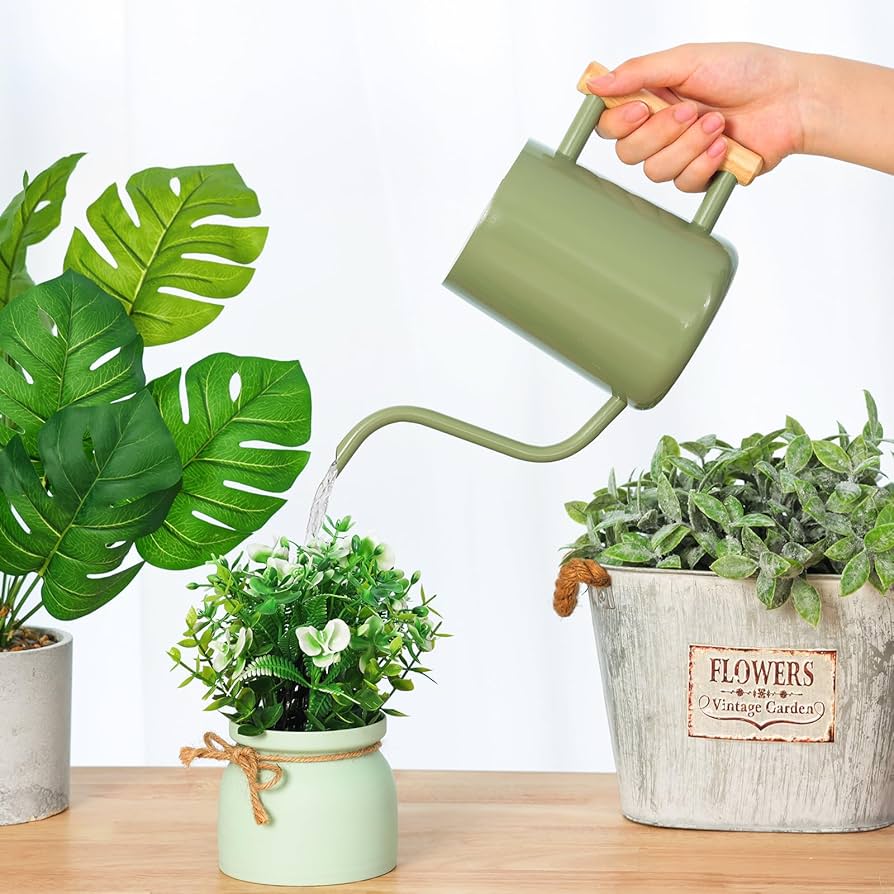
The House Plant Watering Can Designs for Long-living Plants
The Importance of Proper Watering for House Plants
For house plants, proper watering is vital. It ensures they thrive. Each plant’s needs are different. Too much water can lead to root rot. Too little can cause wilting and stunt growth. The right house plant watering can helps prevent these issues. It allows for precision and control. This is important for the health of house plants. Watering needs vary throughout the year. In growing seasons, plants often need more water. In dormant periods, they need less. Using the correct watering can is key. It supports plant health regardless of the season. Remember, a healthy plant with proper watering is more resistant to pests and diseases. A good watering routine combines the right amount of water, timing, and an efficient watering can.
Key Features of an Efficient Watering Can
When looking for an efficient house plant watering can, certain features stand out as essential. Here are a few key aspects to consider:
- Capacity: The size of the watering can impacts how often you’ll need to refill it. For smaller plants or indoor use, a can with a capacity of 1 to 2 liters typically suffices.
- Material: Watering cans come in various materials. Plastic and metal are common. Each has its pros and cons relating to weight and durability.
- Spout design: A long, narrow spout provides precision. It allows for targeted watering, reducing spills and overwatering. Look for spouts with a detachable rose to simulate gentle rainfall.
- Handle comfort: An ergonomic handle reduces hand fatigue. This is crucial when you have multiple plants to water.
- Balance and weight: When full, a watering can should be easy to tip and pour without straining your wrist or arm.
- Visibility of water level: Some cans have a transparent stripe or a gauge. This helps you know how much water is left and can prevent overfilling.
By focusing on these key features, you’ll ensure your house plants receive the right amount of water consistently and efficiently. Adequate research before purchasing can lead to better care for your indoor garden.
Top Watering Can Designs for Different Types of House Plants
Finding the ideal house plant watering can design is essential for the wellbeing of your plants. Different types have distinct features that meet specific needs. Here are some of the top designs that cater to various house plant types:
- Indoor Pouring Cans: These cans are perfect for small indoor plants. They usually have a capacity of 1-2 liters and a precise spout for targeted watering.
- Outdoor Watering Cans: Designed for outdoor use, these cans are larger. Their capacity typically ranges from 5-10 liters. A strong handle supports the heavier weight when full.
- Cans with Detachable Roses: Ideal for plants that need gentle watering. The detachable rose simulates soft rain. This is great for seedlings and delicate foliage.
- Long-Spout Cans: With their extended reach, these cans can water hanging or distant plants with ease. The long spout offers accuracy, essential for crowded plant areas.
- Novelty Watering Cans: These come in fun shapes and colors, adding a decorative touch. While they may not be the most practical, they are suitable for light watering tasks.
- Professional Grade Cans: For the serious indoor gardener, these cans have all the top features. Durable materials, ergonomic design, and capacity options make them a strong choice.
No matter your plant type, there is a house plant watering can design out there to meet your watering needs. Ensure you match the can’s design with your indoor garden’s requirements for efficient and effective plant care.
How to Choose the Right Size Watering Can for Your Indoor Garden
Choosing the right size watering can for your indoor garden is a crucial decision. The size directly affects how often you’ll need to refill and how well you can manage watering tasks. Consideration of the following points will assist in making the best choice:
- Plant Quantity: If you have many house plants, a larger watering can may be better. It lets you water multiple plants before refilling.
- Plant Size: Small plants or seedlings require less water. A smaller watering can provide the right amount without waste.
- Space Constraints: Less room means storing a large watering can might be tough. Compact cans are easy to store and manage in tight spaces.
- Watering Frequency: Some house plants need water more often than others. For frequent watering, a mid-sized can might strike the right balance between capacity and manageability.
- Physical Ability: Consider your comfort when lifting and carrying. A can that’s too heavy when full can be hard to handle, especially for seniors or those with physical limitations.
Select a house plant watering can that fits the needs of your indoor garden without making the task burdensome. A well-chosen watering can will enable you to take care of your plants with ease and promote their growth and health.
Innovative Watering Can Materials and Durability
Choosing a house plant watering can with the right material is crucial. Material choice impacts not just durability but also usability and longevity. Let’s dive into the innovative materials available for watering cans and their durability benefits.
Plastic Watering Cans
Plastic as a material is lightweight and versatile. Modern plastics are also quite durable. They won’t rust like metal cans can over time. Moreover, they come in various colors and designs. This adds a personal touch to gardening tools. But, sunlight can weaken some plastics, so it’s best to store them away from direct exposure.
Metal Watering Cans
Metal watering cans are known for their strength. Galvanized steel or copper are common choices. They offer a classic look along with a sturdy feel. Metals can handle the wear and tear of gardening. Yet, they may be heavier, and without proper care, they can corrode. To prevent rust, store metal cans in a dry place.
Stainless Steel Watering Cans
Stainless steel offers a sleek and modern appearance. It’s resistant to rust and very robust. These cans can last for years if maintained well. They are often heavier than plastic but remain a durable option. The weight needs consideration, especially when full of water.
Rubber Watering Cans
Rubber is an unusual but functional choice. It’s tough and can withstand drops and rough handling. Rubber watering cans often have a good grip and flexibility. However, they can be heavier and might not suit everyone’s needs.
Recycled Materials
Eco-friendly options are becoming popular. Watering cans made from recycled materials support sustainability. They often blend durability with a lighter environmental footprint. Such materials may include recycled plastics or metals. These choices show care not only for plants but also for the planet.
When selecting a house plant watering can, consider these innovative materials. Think about how each one aligns with your gardening needs and values. Durability ensures your watering can stands the test of time, protecting your investment and supporting your passion for house plants.
Ergonomic Watering Cans for Ease of Use
An ergonomic house plant watering can is key for comfort. It should feel good in your hand. A well-designed handle is a must. It should let you grip without strain. Such cans help you water plants with ease. A lightweight can reduces fatigue during long watering sessions.
Look for cans with curved handles for a natural hold. Also, consider a can’s balance. A well-balanced can makes lifting and pouring simpler. You want a can that is easy to tilt without spilling. This makes watering house plants less of a chore.
An ergonomic can often has a contoured design. This fits better against your body when carrying. It makes moving between plants smooth and easy. Choose a can that brings ease to your gardening. This way, taking care of your indoor plants is both effective and comfortable.
Watering Can Care and Maintenance Tips
To keep your house plant watering can in top shape, follow these simple care and maintenance tips:
- Regular Cleaning: After each use, rinse your watering can to prevent sediment buildup. Wipe it dry to avoid water spots and rust.
- Proper Storage: Store your watering can in a shaded, dry place. This protects it from weather damage and extends its lifespan.
- Inspect for Damage: Check for leaks, dents, or nozzle clogs. Fix them promptly to maintain efficiency.
- Handle With Care: Use your watering can as intended. Avoid dropping it or using it as a stool.
- Periodic Deep Cleaning: Occasionally, clean the inside with a brush. Vinegar or soapy water can remove dirt or mineral deposits.
Careful attention to these tips will ensure your house plant watering can stays functional. This helps make watering easier and your plants happier.
Recommended Watering Techniques for Healthy House Plants
Healthy house plants need more than just a good watering can. They also require proper watering techniques. Here are tips for keeping your plants hydrated and happy:
- Check Soil Moisture: Before watering, feel the soil. If it’s dry an inch below the surface, it’s time to water.
- Water Deeply: Ensure water reaches the roots. Water slowly so the soil absorbs it, rather than letting it run off.
- Avoid Wetting Leaves: Try not to splash the leaves. Wet leaves can encourage fungal diseases.
- Morning Watering: Water plants in the morning. This lets the water absorb before the heat of the day minimizes evaporation.
- Use Room Temperature Water: Cold water can shock plants. Let tap water sit out until it reaches room temperature.
- Know Your Plants: Different plants have different needs. Learn each plant’s preferences for the best care.
By following these techniques with a suitable house plant watering can, your indoor garden will flourish. Remember, consistent care leads to healthy, long-living plants.

The Best Indoor Watering Can for Your Plants and Specific Needs
Types of Indoor Watering Cans
When seeking the best indoor watering can, consider the different types available. Each type suits specific needs and preferences.
Plastic Watering Cans
Plastic watering cans are lightweight and easy to handle. They come in various sizes and colors. Such cans are often affordable, making them a popular choice. They resist rust and are easy to clean. When choosing a plastic can, look for one that is BPA-free for safety.
Metal Watering Cans
Metal watering cans offer durability and sturdiness. They come in classic designs and can add an aesthetic touch to your home. However, they can be heavier than plastic versions. It’s important to ensure that the metal is coated to prevent rusting.
Decorative Watering Cans
Decorative watering cans serve a dual function. They water plants and enhance home decor. These cans come in unique shapes and vibrant designs. While they are attractive, make sure they are also functional for your watering needs.
Self-Watering Cans
Self-watering cans are a convenient choice for busy plant owners. They can provide a steady supply of water over time. They work well for people who travel often or forget to water their plants. However, they may not offer the same precision as traditional watering cans.
Factors to Consider When Choosing an Indoor Watering Can
Selecting the best indoor watering can is more than just style. Here are essential factors to weigh in.
Capacity and Size
Consider the amount of water needed for your indoor garden. Small cans are great for herbs and tiny plants. Larger ones suit big plants. Storage space impacts your choice of size as well.
Spout Design and Length
A long spout reaches plants with ease. It helps to water at the roots without spills. Shorter spouts suit small, crowded trays. Choose a spout that matches your watering routine.
Material Durability
Material affects lifespan and use. Plastic is light but may crack over time. Metal lasts longer but check for a rust-proof finish. Pick a material that survives regular use.
Ergonomics and Comfort
Go for a can with a comfy grip and balance. It should feel good in your hand when full. A heavy can may strain your wrist over time.
Aesthetics vs. Practicality
Choose a can that suits your decor but don’t sacrifice function. Pretty cans are good, but watering precision and plant health come first. Find the right balance for your needs.
The Importance of Precision Watering
Proper watering is crucial for plant health. The right indoor watering can helps ensure this precision. Precision watering means delivering the right amount of water directly to the soil. Over or underwatering can harm plants. The best indoor watering can offers control over the water flow. This control helps prevent water waste and stem damage.
Control and Water Flow
Choose a watering can with a narrow spout for control. A gentle water flow is key for seedlings and delicate plants. This helps mimic gentle rainfall. A can with an adjustable flow is ideal for varied plant needs. Look for cans with a valve or holes that create a shower effect. This feature helps distribute water evenly.
The Impact on Plant Health
Consistent water delivery boosts root growth and plant strength. It reduces the risk of diseases linked to overwatering. Precise watering keeps leaves dry, lowering fungus risk. Plants need the right hydration to absorb nutrients effectively. Thus, the right indoor watering can should aid in providing this necessary hydration without stress or overcompensation.
Top Features to Look for in an Indoor Watering Can
Selecting the best indoor watering can involves looking out for features that elevate functionality and convenience.
Detachable Spout Heads
A can with a detachable spout head offers flexibility. You can change the spout to suit different plants’ needs. For example, narrower spouts are great for precision. Wider spouts allow watering at a faster rate. Easy detachment also means simpler cleaning.
UV-Resistant Materials
If you store your can outside or in bright areas, UV resistance matters. This feature helps to keep the material from fading or becoming brittle. Most good plastic cans have this feature. It prolongs your can’s life and keeps it looking new.
Transparent Body for Water Level
A watering can with a transparent body is very useful. It lets you see how much water is inside. This way, you avoid over-filling and spilling. It’s a practical feature that helps monitor water use. Plus, it makes the task of watering plants a bit easier to manage.
How to Maintain Your Indoor Watering Can
Maintaining your indoor watering can is vital for its longevity and performance. Proper care helps prevent issues like rust, leakage, and mineral buildup that can affect its functionality.
Cleaning and Storage Tips
Regularly clean your watering can after use. Emptying it reduces the risk of rust, especially in metal cans. Use mild soap and a brush to scrub away dirt and grime. Rinse it well to clear out any soap residue. Store your can in a dry place to avoid moisture buildup. Ensure it’s upside down so remaining water drains out. This keeps the can clean and ready for the next use.
For those with detachable spout heads, detach and rinse them separately to remove debris. This prevents clogging and maintains a consistent water flow. Always air dry completely before reattaching.
Preventing Rust and Mineral Buildup
To prevent rust, particularly with metal watering cans, dry them after each use. Apply a rust-resistant coating if the manufacturer recommends it. Replace any worn or damaged parts promptly to prevent further damage.
For mineral buildup, use vinegar or a specific descaling product. Fill the can with the solution and let it sit for a few hours, then rinse thoroughly. For tough buildup, you might need to repeat the treatment or lightly scrub the affected areas.
By following these simple maintenance steps, you ensure your best indoor watering can remains an effective tool in plant care. Remember, a well-maintained can serves you and your plants for years to come.
Recommendations: Best Indoor Watering Cans on the Market
Finding the best indoor watering can is essential for all plant enthusiasts. The market offers a variety of options, catering to different preferences and needs. Here are my top picks for high-quality brands and models, as well as budget-friendly choices, to aid in precision watering for indoor plants.
High-Quality Brands and Models
- Haws Heritage Indoor Plastic Can – This can combines durability with elegance. It has a brass-faced rose and a downspout, perfect for gentle watering.
- Bloem Easy Pour Watering Can – It’s known for ergonomic design and a rotating spout. It offers comfort and precision at once.
- Fiskars Easy-to-Pour Watering Can – This model boasts a long spout and an off-set filling hole for easy use and refill.
- IKEA Vattenkrasse – This stylish can suits modern homes and ensures effortless watering with its sleek design.
- Gardman Galvanized Steel Watering Can – A metal option with a vintage look. It’s rust-resistant and extremely sturdy for long-term use.
Budget-Friendly Options
- Plastic Indoor Watering Can – A simple, affordable, no-frills option that gets the job done without denting your wallet.
- IKEA PS V?LL? – This is a compact and lightweight can, ideal for the budget-conscious gardener.
- Union 63182 Elephant Watering Can – Fun for both adults and kids, this can is low-cost and adds a touch of whimsy to plant care routines.
- Novelty Indoor Watering Can – Offers basic functionality in a variety of colors for those looking to match their decor on a budget.
- MyLifeUNIT Plastic Watering Can -With a slim, long spout watering can, it’s designed for accessible and precise watering at a minimal cost.
When looking for the best indoor watering can, consider the aspects of control, water flow, plant health, and maintenance. Whether you prefer high-end models or are searching for a more economical solution, there’s a variety of watering cans that promise quality and functionality. Remember to integrate features like detachable spout heads, UV-resistant materials, and transparent bodies for water levels to find your ideal match.
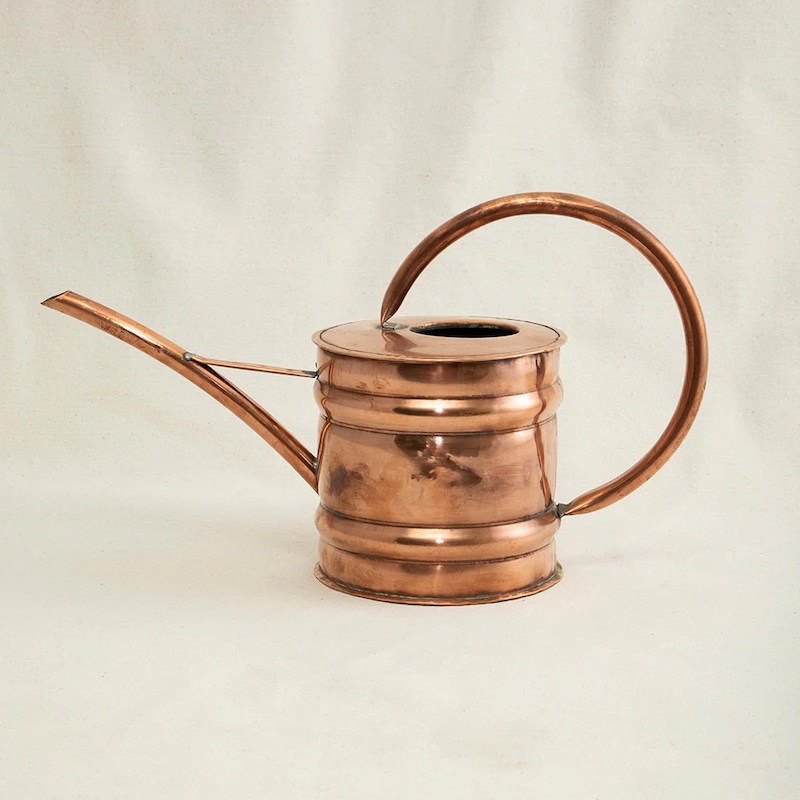
Watering Can with Long Spout: Ideal for Precision Plant Hydration
The Benefits of a Long Spout in Watering Cans
Using a watering can with a long spout offers multiple advantages for gardeners and plant enthusiasts. First and foremost, it allows precise water delivery. The long spout reaches easily into tight spots, ensuring that water goes directly to the plant’s base, without splashing or spilling on the leaves. This is crucial for plants susceptible to leaf diseases when wet.
Additionally, a long spout helps control the water flow, offering a gentle shower that doesn’t disturb the soil or damage delicate plants. This feature is especially beneficial for young seedlings or fragile flowers that require a soft touch.
Another key benefit is reduced strain on the gardener’s body. With a long spout, there’s no need to stretch or bend awkwardly to water plants in hard-to-reach areas. This ergonomic advantage means you can maintain a comfortable posture while watering, which is notably helpful for those with mobility issues.
Investing in a watering can with a long spout also promotes water conservation. By directing water exactly where it’s needed, waste is minimized. Every drop counts, especially in regions with water scarcity or for eco-conscious gardeners aiming to reduce their environmental footprint.
In summary, a long spout watering can offers precision, control, ergonomic comfort, and promotes conservation, making it an ideal tool for any gardening task.
Key Features to Look for in a Long Spout Watering Can
When shopping for a watering can with long spout, there are several key features to consider. These features not only add to the convenience of watering your plants but also ensure longevity and efficiency of the tool. Here’s what to look out for:
- Spout Length and Shape: Opt for a watering can with a spout that’s long enough to reach your plants comfortably. A curved or angled spout can help in targeting water right at the roots. Some spouts come with a detachable rose, which is great for gentle watering.
- Material Durability: Watering cans are made from various materials like plastic, galvanized steel, or copper. Each has its pros and cons. Metal cans are often more durable than plastic but may be heavier.
- Comfortable Handle Design: A good grip makes watering less of a chore. Look for a handle that’s easy to hold and balances the can when it’s full. An ergonomic design can reduce hand fatigue.
- Capacity: Choose the size based on your garden’s needs. A larger capacity means fewer trips to refill, but also a heavier can to carry.
- Water Control: A watering can with a precision spout and adjustable flow is crucial for controlling water output. This is especially important for delicate plants or seedlings.
- Aesthetic Appeal: While function is key, the design of the can may be important to you. Many gardeners prefer a watering can that looks good in their garden space.
Keep in mind these features to find a watering can with long spout that is not only a functional tool for your gardening needs but also a pleasure to use.
Top Rated Long Spout Watering Cans on the Market
When it comes to finding the best watering can with a long spout, there are several top-rated options to consider. These products stand out for their quality, functionality, and customer satisfaction. Here’s a rundown of some standout watering cans that have garnered positive reviews:
- The Classic Gardener’s Choice: This high-quality watering can combines durability with a sleek design. The long, slender spout provides excellent reach, ideal for watering hanging baskets or back-of-border plants. It often features a sturdy metal construction and a comfortable wooden handle.
- The Modern Minimalist: If you prefer a more contemporary look, this watering can might be for you. It’s made of lightweight materials and has a long, clean-lined spout. Its elegant design is perfect for minimalists who also want functionality.
- The Eco-Friendly Option: For those who are environmentally conscious, an eco-friendly model could be the best pick. Often crafted from recycled materials, these watering cans with long spouts are designed with sustainability in mind.
- The Heirloom Quality Can: Some gardeners invest in a watering can that will last for generations. Heirloom-quality cans are typically made from durable metals like copper and are known for their long, gracefully curved spouts.
- The Budget-Friendly Find: You don’t have to spend a lot to get a high-performing long spout watering can. There are budget-friendly models that offer a good balance between cost and quality. They might be less robust but can still offer a good reach and comfortable handling.
Before making a purchase, consider the specific needs of your garden and balance them with the reviews of avid gardeners. Look for capacity, ease of filling, balance, and the quality of the material. With the right watering can with a long spout, you can make gardening easier and more enjoyable.
Caring for Indoor Plants with a Long Spout Watering Can
Indoor plants add beauty and life to our homes, but they require careful watering to thrive. A watering can with a long spout is an excellent tool for maintaining the health of your indoor greenery. Here are reasons why it should be part of your plant care routine:
- Direct Water to the Root Zone: The long spout lets you water the soil directly, avoiding the leaves and stem. This helps prevent leaf rot and disease.
- Avoid Overwatering: Using a long spout watering can gives you better control over the amount of water. This means less risk of overwatering, which can harm or even kill plants.
- Reach Hanging and Tall Plants: The extended reach of a long spout makes it easy to water hanging baskets or tall plants without a step stool.
- Keep Leaves Dry: Many indoor plants, like African violets, dislike wet leaves. The precise pour of a long spout can keeps leaves dry and happy.
- Minimize Disturbance to Soil: A gentle water flow maintains soil structure. This is crucial for delicate roots and helps prevent erosion in the pot.
- Watering with Precision: Especially for plants in narrow or crowded spaces, precision is key. The long spout allows you to deliver water exactly where it’s needed.
When caring for indoor plants, always check the soil moisture before watering. Use your long spout watering can to give a thorough drink when the top inch of soil is dry. This tool, combined with the right watering technique, ensures that your indoor plants grow vibrant and strong.
The Importance of Watering Techniques for Different Plants
The right watering techniques are vital for plant health. Different plants need different amounts of water and methods of delivery. Using a watering can with long spout helps apply these techniques effectively. Let’s look at some key tips:
- Understand Your Plant’s Needs: Every plant species has unique watering requirements. Some need moist soil at all times, while others thrive with dry periods.
- Check Soil Moisture: Before watering, always check the soil. Use your finger or a moisture meter.
- Water Deeply but Infrequently: This encourages roots to grow deep and strong. It’s often better than frequent shallow watering.
- Use Room Temperature Water: Cold water can shock roots, while warm water can harm them. Room temperature is best.
- Time Your Watering: Morning is usually the best time to water plants. It gives them time to absorb it before the heat of the day.
- Adjust for Seasons and Weather: Plants need less water in winter and more in dry, hot weather. Watch for these changes and adjust how you water.
- Focus on the Root Zone: With a long spout, you can deliver water straight to the roots. This is where plants absorb water and nutrients.
Using these techniques with a watering can with long spout will help your plants flourish. Always remember, overwatering can be as harmful as under-watering. Be observant and responsive to your plants’ signals for the best results.
Long Spout vs. Short Spout: Pros and Cons
When you’re choosing between a watering can with a long spout and one with a short spout, it’s crucial to weigh the pros and cons of each. Here’s a quick rundown to help you decide which type suits your gardening needs best.
Pros of Long Spout Watering Cans:
- Reach: They extend your reach, making it easier to water plants that are far away or hard to access.
- Precision: The design allows for targeted watering, reducing waste and ensuring water gets directly to the plant’s roots.
- Safety for Leaves: They help keep leaves dry, preventing leaf diseases that can arise from moisture.
- Ergonomics: They prevent strain by eliminating the need to stretch or bend over your plants.
Cons of Long Spout Watering Cans:
- Weight: When filled with water, the can may become heavier and harder to manage, especially with a very long spout.
- Storage: They require more space to store due to their size.
- Price: Sometimes they can be more expensive than short spout alternatives.
Pros of Short Spout Watering Cans:
- Control: They can offer greater control and balance when watering, useful for small or tight spaces.
- Portability: Easier to carry and handle, making them ideal for quick watering jobs or for people with less strength.
- Cost: They tend to be more affordable and are a good basic option for simple watering tasks.
Cons of Short Spout Watering Cans:
- Limited Reach: It’s harder to water plants that are not easily accessible.
- Risk of Overwatering: Focused, heavy flow may lead to overwatering or soil disturbance.
- Less Precision: Without a long spout, it’s more challenging to avoid getting water on plant leaves or missing the root zone.
In conclusion, a long spout watering can offers greater precision and reach but may be more cumbersome and expensive. On the other hand, a short spout is more manageable and afforable but lacks the precision and extension of a long spout. Your choice should depend on your garden layout, the types of plants you have, and your personal comfort and ability to manage the can.
Enhancing Your Gardening Experience with the Right Watering Can
Choosing the perfect watering can with long spout can greatly enhance your gardening experience. Here’s how to ensure you get the most out of this essential tool:
- Match the Can to Your Needs: Consider the size and type of your garden. Pick a can that holds enough water for your plants while still being easy to carry.
- Look for Comfort: A can with an ergonomic handle can make watering less tiring. This is important if you spend a lot of time gardening.
- Check for a Removable Rose: Some long spout cans come with a detachable watering rose. This is useful for switching between a gentle shower and a more direct stream.
- Consider Balance: When full, the can should be balanced. A well-designed can won’t tip over easily and helps prevent water wastage.
- Ease of Use: Make sure the can is simple to fill, carry, and pour. Avoid cans that are awkward to handle or pour from.
- Opt for Durability: A durable watering can with long spout is a good investment. It will last for many seasons, saving you money in the long run.
By paying attention to these factors, you can make watering your garden a more enjoyable and effective task. The right can help you care for your plants precisely and with ease.
Innovative Designs in Long Spout Watering Cans
Watering can designers are always looking for ways to improve function and style. Innovative designs in watering cans with long spouts bring new levels of convenience and efficiency to gardening. Here are some trends in design to look out for:
- Collapsible Spouts: Some watering cans now feature spouts that can be collapsed or telescoped. This makes storage easier without sacrificing reach.
- Weight Distribution: Newer models focus on an even weight distribution. They make the can feel lighter and easier to carry, even when full.
- Ergonomic Triggers and Grips: Watering cans are getting more ergonomic. Triggers and contoured grips help control water flow and reduce hand fatigue.
- Integrated Measuring Scales: For precise plant care, some cans have scales to measure water volume. This helps you give each plant the right amount of water.
- Dual Handles: A top handle paired with a side handle offers better control. This design helps when tipping the can to pour.
- Fashion-forward Colors and Patterns: Today’s cans come in a range of colors and patterns. They can blend with your garden’s aesthetic or stand out as a statement piece.
- Self-Watering Systems: Some long spout cans have a self-watering feature. They drip-feed plants a consistent water supply, perfect for when you’re away.
These innovative designs in watering cans with long spouts combine practicality with visual appeal. They make gardening tasks not just easier, but also more enjoyable. Look for these features next time you’re in the market for a new watering can.
Tips for Maintaining Your Long Spout Watering Can
To keep your long spout watering can in top shape, follow these easy maintenance tips:
- Rinse After Use: Always rinse out your watering can after use. It prevents buildup and clogs.
- Store Properly: Keep your can in a dry place to avoid rust and damage.
- Check for Leaks: Inspect your can regularly for any holes or cracks. Patch them up quickly.
- Handle with Care: Be gentle with your can. Rough handling can lead to dents and damage.
- Clean the Spout: Ensure the spout is free from debris. Use a brush to clear blockages.
- Dry Thoroughly: After cleaning, dry your can well to prevent rust, especially if it’s metal.
- Use Mild Detergents: If deep cleaning is needed, use mild soaps to protect the finish.
Proper care will extend your watering can’s life and keep it functioning for years. These tips use common household items and take little time, making them easy to follow. Plus, they ensure your watering can continues to assist you in nurturing your garden with precision.
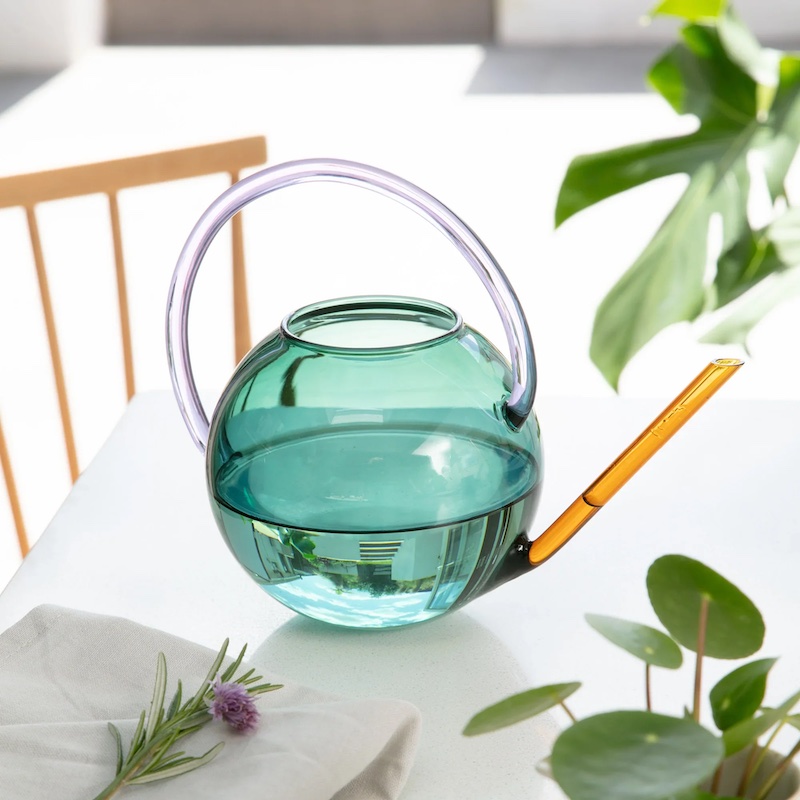
The Glass Watering Can: A Gardener’s Eco-Friendly Choice
The Importance of Eco-Friendly Gardening Tools
Eco-friendly gardening tools play a crucial role in modern horticulture. They help reduce our environmental footprint, cutting down on plastic waste and pollution. Tools like a glass watering can are more than just tools; they’re a statement of sustainable living. By using them, gardeners can conserve resources and support eco-friendly practices. Glass watering cans, in particular, stand out because they’re durable, recyclable, and free from harmful chemicals that may leech into the soil. Unlike plastic, glass doesn’t degrade over time to become microplastics, which are a growing concern for ecosystems.
Gardeners who choose eco-friendly tools are forward-thinking. They are protecting the biodiversity of their gardens and the wider environment. Eco-friendly gardening tools, including glass watering cans, may seem a small change. Yet, they make a significant impact over time. They promote a cycle of sustainability that benefits not only the current but also future generations. By using these tools, gardeners take part in a movement that values nature and works to preserve it. This approach to gardening fosters a connection with the earth that is mindful and responsible.
In summary, eco-friendly gardening tools are essential for a sustainable future. A watering can is a simple but powerful choice for those dedicated to nurturing their gardens responsibly.
Advantages of Glass Watering Cans Over Plastic
Choosing a glass watering can over plastic options offers several benefits for both gardeners and the environment. Here are a few key advantages:
- Longevity: Glass is far more durable than plastic. It resists wear and tear, ensuring your watering can will last for many seasons.
- Eco-Friendly: Glass watering cans don’t contribute to plastic pollution. They are 100% recyclable, reducing waste in landfills.
- Safety for Plants: Unlike some plastics, glass doesn’t release harmful chemicals. This feature makes glass watering cans safer for watering edible plants and maintaining soil health.
- Sturdiness: Glass is generally heavier than plastic, which can make the watering can more stable and less likely to tip over or get blown away by the wind.
- Heat Resistance: Glass can withstand exposure to sunlight without degrading. Plastic cans often become brittle and crack over time when left out in the elements.
- Transparency: The clear nature of glass allows you to see the water level. This helps prevent over or under-watering of your plants.
- Design: Glass watering cans often come in elegant designs. They can serve as a decorative element in your garden when not in use.
By turning to a glass watering can, gardeners embrace a sustainable and practical tool that enhances their gardening practice while contributing positively to the environment.
Types of Glass Watering Cans for Different Plants
When choosing a glass watering can, it is important to consider the types of plants you’re tending. Different plants have unique watering needs, and the right type of glass watering can help you meet these requirements effectively. Here’s a brief overview of various glass watering cans suitable for different plant types:
- Indoor Potted Plants: Smaller, more delicate glass watering cans with long spouts are ideal for indoor plants. The precision spout allows for targeted watering, minimizing spillage and ensuring that small pots receive the right amount of water.
- Outdoor Flower Beds: For outdoor use, larger glass watering cans with a wide spout can cover more ground quickly. This is especially useful for flower beds or rows of plants that need even, consistent watering.
- Seedlings and Young Plants: When nurturing seedlings or young plants, opt for a glass watering can with an adjustable spout. This feature permits gentle watering, which is critical so as not to disturb the young roots or wash away soil.
- Hanging Plants and Baskets: A glass watering can with an angled spout helps reach hanging plants. This design allows water to be directed upwards and into hard-to-reach containers without causing strain or spillage.
- Succulents and Cacti: Succulents require minimal and precise watering. A small glass watering can with a narrow spout is perfect for these plants. These cans let you provide just the right amount of moisture without overwatering.
Choosing the right glass watering can makes all the difference in keeping your plants healthy and thriving. Gardeners should select a can that is not only functional but also one that complements their gardening practices and the specific needs of their plant collection.
How to Choose the Right Size and Shape for Your Gardening Needs
Picking the right size and shape for your glass watering can is key to gardening with ease. Here are some tips to make sure you get the perfect match for your plants:
- Consider Capacity: Think about how much water your plants need. Smaller cans are great for indoor or balcony gardens. Larger ones suit outdoor gardens where more water is a must.
- Look at the Spout: The design of the spout affects water flow. A long, narrow spout is perfect for precise watering. A wider one is better for quick, broad coverage.
- Shape Matters: Go for a design that feels comfortable to carry and tilt. Cans with curved handles can be easier on your hand. An ergonomic design helps prevent strain during long gardening sessions.
- Balance is Vital: With glass being heavier than plastic, ensure the can is not too heavy when full. A well-balanced can makes watering less of a chore.
- Factor in Storage: Consider where you’ll store your watering can. Choose a shape that is easy to put away and fits well in your garden space.
- Ease of Cleaning: Some shapes can be harder to clean. Pick one that allows you to reach inside easily for a thorough wash.
Selecting a glass watering can that meets your gardening needs doesn’t just improve your plant care routine. It also adds to the enjoyment and efficiency of your gardening. Keep these points in mind and you’ll find a glass watering can that is both functional and a pleasure to use.
The Aesthetic Appeal of Glass Watering Cans in Garden Design
Glass watering cans do more than water plants. They enhance garden design with their elegance. The clear body of a glass watering can shines in sunlight. It brings a sparkle to garden corners. Think of it as a functional art piece. It can sit among flowers, adding to the garden’s visual delight.
When not in use, a glass watering can acts as a decorative piece. Its sleek design can complement any gardening theme. Whether you have a modern garden or a rustic charm, the glass can fits right in. It stands out among green foliage and colorful blooms. This makes it a great choice for gardeners who value form and function.
The variety of styles available means there’s a glass can for every taste. Some have intricate patterns or designs etched into them. Others keep it simple, letting the water’s movement be the focal point. A glass watering can can reflect a gardener’s personality. It’s a creative choice that adds personal flair to the space.
A glass watering can is not just a tool. It’s a statement of style and eco-consciousness. Its aesthetic value is a bonus to its environmental benefits. It supports sustainable living while beautifying the garden. Choosing a glass watering can is choosing both utility and beauty.
Select a glass can that suits your garden’s aesthetic. Watch it blend seamlessly into your green sanctuary. Its presence will uplift the atmosphere of your garden. It supports the growth of your plants while adding charm. It’s a win-win for eco-friendly gardening enthusiasts and design lovers alike.
Maintenance and Care Tips for Glass Watering Cans
To keep your glass can in top shape, follow these simple care tips:
- Clean Regularly: Rinse out the can after each use. This prevents the build-up of minerals from the water.
- Handle with Care: Glass is durable but can break. Carry and store your can with care to avoid damage.
- Use Soft Water: If possible, fill your can with soft water. It’s gentler on the glass and plants.
- Avoid Extreme Temperatures: Don’t fill your glass can with very hot or freezing water. Sudden temperature changes may crack the glass.
- Check for Leaks: Inspect your can for any cracks or leaks. Small damages can lead to bigger problems over time.
- Dry Well: After cleaning, allow your can to dry completely. Store it in a dry place to prevent mold or water stains.
- Use Proper Tools for Cleaning: Use brushes with soft bristles for cleaning. They are less likely to scratch the glass.
By taking good care of your glass can, you’ll ensure its longevity and performance. It’s a small effort that maintains both its function and beauty. Plus, it supports your eco-friendly gardening practices for years to come.
The Role of Glass Watering Cans in Sustainable Gardening Practices
Sustainable gardening is more than just a trend. It is a commitment to protect the environment. Glass watering cans play a key role in these practices. They offer a way to care for plants without harming the planet. Let’s look at how they fit into sustainable gardening.
- Reusability and Recyclability: Glass watering cans are long-lasting. If they do break, you can recycle the glass. This cycle reduces waste in landfills.
- Chemical-Free Watering: Glass does not leech toxic chemicals. This ensures that plants get only clean water. Soil and waterways stay safe from contamination.
- Energy Savings: Making a glass can often uses less energy than plastic. This conserves resources and minimizes carbon footprints.
- Supporting Biodiversity: Clean watering practices protect local wildlife. Plants flourish, providing habitats for insects and birds.
- Education and Awareness: Using a glass can teaches others. It shows the value of sustainable tools in gardening.
In conclusion, glass watering cans are more than a choice. They are part of a movement towards a greener future. They encourage environmentally conscious gardening. Gardeners can make a real difference with a simple switch to glass.

A Rewarding Hobby: Antique Watering Can Collectors Guide
Introduction to Collecting Antique Watering Cans
Collecting the antique watering can can be a rewarding hobby. It combines history, art, and gardening in a unique blend. If you’re new to this niche, it’s useful to understand its attraction. Antique watering cans are more than just old gardening tools. They are a window into the past and showcase craftsmanship from bygone eras.
New collectors should start by learning the basics. Know the different materials and designs that mark an item as an antique watering can. Some are made from metals like copper or galvanized iron. Others might feature intricate patterns or special markings.
It’s also crucial to be aware of the condition. Look for signs of wear and authenticity. This might include patinas, maker’s marks, or historical insignia. Remember, the condition can greatly affect the value of the watering can.
Connect with other enthusiasts to learn from their experiences. Join online forums, attend auctions, or visit flea markets. These are great places to gather valuable insights. Here, you can see a variety of antique watering cans up close.
Lastly, be patient and don’t rush your purchases. It’s better to build a small collection of valuable pieces than to have many of lesser quality. Enjoy the journey of finding each unique piece and adding it to your collection. Start exploring the world of antique watering cans and their rich history!
The History of Watering Cans and Their Evolution
The story of the watering can begins centuries ago. Early designs were simple and practical. They used materials easily found in nature like animal skins or hollowed-out gourds. As societies advanced, so did the tools they used. Metalworking skills brought us the first metal watering cans. They were durable and could last a lifetime. By the 17th century, watering cans were common in gardens across Europe. They often had a single handle and a spout. This design allowed gardeners to control the flow of water better.
The 19th century saw a boom in horticulture. Watering cans evolved to meet the needs of more serious gardeners. They began to feature a rose—a perforated nozzle. This created a gentle shower for delicate plants. Industrialization also played a role. It allowed for mass production of watering cans. Suddenly, they were not just for the wealthy. Everyone could own one. This era also introduced new shapes and decorative elements. Some watering cans from this period are now sought-after antiques.
Twentieth-century watering cans advanced with technology. Rust-resistant metals and new alloys emerged. These materials extended the lifespan and utility of the cans. The design became more refined too. Handles and spouts offered greater comfort and efficiency. Today, antique watering cans are a testament to these advances. Collectors appreciate both their form and function. They stand as a symbol of gardening’s rich history.
Identifying Antique Watering Cans: Materials and Markings
To start identifying antique watering cans, pay attention to materials and markings. Expert collectors know these can reveal a lot about a can’s age and origin.
First, examine the material. Antique watering cans come in various metals. Common ones include copper, brass, and galvanized iron. Their weight, color, and texture can signal their time period. For instance, heavy copper cans often hail from the 18th or 19th century.
Next, look for maker’s marks. These are signatures or symbols from the manufacturer and can be quite distinct. They sit on the bottom or side of the can. Authentic marks add to a can’s historical value.
You should also check for any unique features. This includes hand-crafted designs or special finishes such as a patina. A patina is a green or brown film on the surface of bronze or similar metals, produced by oxidation over time. It indicates the can has aged naturally and wasn’t recently made to look old.
Lastly, inspect for signs of original construction versus modern repairs. The method of joining pieces, like soldering, can tell you if the can is genuinely antique or if parts have been replaced. Look closely at seams and edges for signs of wear consistent with the can’s age.
Remember, identifying antique watering cans can be complex. Always gather as much information as possible. Cross-reference your findings with reputable guides and consult other enthusiasts when in doubt.
The Various Styles and Designs of Antique Watering Cans
Antique watering cans come in many styles and designs. Collectors often seek out pieces with unique shapes or features. Let’s explore some common types you might encounter.
- Long Spout Watering Cans: These have a slender spout that makes watering easy. They are great for reaching plants without causing damage.
- Round or Oval Bodies: Many antique cans showcase a round or oval body. This shape is classic and often associated with older models.
- Decorative Elements: Some cans feature ornate designs or embossed patterns. Details may include floral motifs or geometrical shapes.
- Rose Watering Cans: Equipped with a rose, or a perforated nozzle, these provide a gentle shower for plants. They became popular in the 19th century.
- Animal-Shaped Watering Cans: These whimsical cans take the form of animals. They add a playful touch to any collection.
- Wall-Mounted Watering Cans: Functional and decorative, these were hung on walls when not in use.
- Miniature Watering Cans: Small cans were not just for children. They also served to water indoor plants or as decorative pieces.
- Painted Watering Cans: Some antique cans boast painted surfaces. They can tell stories through their artwork.
Remember, the style and design help tell the age and origin story of an antique watering can. Look at the overall shape, handle design, and spout’s form. A diverse collection showcases a range of designs and the evolution of these charming relics.
Where to Find Antique Watering Cans: Tips and Tricks
Finding antique watering cans can be a delightful treasure hunt. Here are some tips and tricks to help you locate these historical pieces:
- Visit Local Antique Shops: Start close to home. Local antique shops often have a variety of watering cans. Inspect each one carefully for age and condition.
- Check Out Estate Sales: Estate sales can be gold mines for antique finds. They sometimes offer rare pieces at reasonable prices.
- Attend Garden and Antique Fairs: These fairs often feature vendors who specialize in garden antiques. They are a great place to find unique watering cans.
- Explore Online Auctions: Websites like eBay have a wide selection. Be sure to read the product descriptions and view all photos.
- Connect with Collectors Groups: Join forums or social media groups. Fellow collectors can offer advice and may even have cans for sale.
- Visit Flea Markets: Flea markets are known for unexpected treasures. Arrive early for the best selection.
- Check out Online Marketplaces: Websites like Etsy can connect you with sellers of antique goods from around the world. Always check seller reviews and ratings.
- Use Keyword Searches: When searching online, use keywords like ‘antique watering can’ to narrow your search.
Remember, when searching for antique watering cans, patience and persistence are key. With these tips, you’re well on your way to adding beautiful and historic pieces to your collection.
How to Determine the Value of Antique Watering Cans
Determining the value of an antique watering can involves several factors. Here is a simple guide to help you assess its worth:
- Check the Age: Older cans generally hold more value. Look for dating clues in their materials, design, and markings.
- Assess the Condition: Value increases for cans in good shape. Minor wear is acceptable but avoid cans with major damage.
- Note Rarity: Unique or scarce designs can be more expensive. Single-handle designs and hand-crafted details often indicate a rare piece.
- Research Maker’s Marks: Identify the manufacturer. Can with clear, recognizable marks may be more valuable.
- Consult Price Guides: Use guides or auction results to compare prices. These can indicate current market trends for various types of antique watering cans.
- Survey Demand: High demand can drive up prices. Check interest in similar cans among collectors and at antique shops.
- Examine Restorations: Original cans are usually worth more. Those with modern repairs or parts might be less valuable.
- Authenticity is Key: Ensure the watering can is authentic. Replicas or fakes are worth significantly less than real antiques.
Remember, while common watering cans might be moderately priced, rare and well-preserved examples could be considerably valuable. Take your time to research and understand what you have. Connect with experts if needed for a more accurate valuation.
Caring for and Preserving Your Antique Watering Can Collection
Caring for antique watering cans is key to maintaining their value and charm. Here are steps to follow for proper care and preservation:
- Handle with Care: Always use a gentle touch. Avoid rough handling that can dent or scratch the metal.
- Clean with Caution: Use a soft cloth to wipe away dust. For tougher dirt, use mild soap and water. Dry immediately to prevent rust.
- Avoid Harsh Chemicals: Never use abrasive cleaners. They can harm the can’s patina and reduce its value.
- Display Wisely: Keep cans out of direct sunlight. This prevents paint from fading. Also, avoid damp areas to stop rust or corrosion.
- Repair with Respect: If repair is needed, find an expert. It’s important to retain the can’s original features as much as possible.
- Regular Inspections: Check your cans often for any signs of damage. Early detection can prevent serious issues.
- Control the Environment: Maintain a stable climate. Extreme temperatures and humidity can damage antique metals.
- Document Your Collection: Keep records of each piece. Include photos, descriptions, and condition reports.
By following these tips, your antique watering cans can last for many more years. This will keep your collection both beautiful and valuable. Remember, every can tells a story. Preserve that story with care and attention.
Highlighting Unique and Rare Antique Watering Can Finds
Every collector dreams of stumbling upon that one unique or rare find. Antique watering cans are no exception. They often hide gems waiting to be discovered. Pay attention to the distinctive features that set them apart. Here are some key points to consider.
- Look for Uncommon Shapes: Unique forms can be quite valuable. They range from abstract figures to designs inspired by nature.
- Search for Signature Designs: Certain makers crafted signature styles. These can command higher prices due to their distinctiveness.
- Find Cans with Provenance: A watering can with a known history can be a real treasure. This might include items from famous gardens or ones owned by historical figures.
- Check for Limited Editions: Occasionally, manufacturers released limited runs. These often have serial numbers or special markings.
- Seek Out Decorative Features: Extra details like hand-painted designs or embossed images can signal a rare find.
- The Story Matters: Sometimes, it’s the story behind the can that drives its rarity. Cans with a documented past spark the imagination and the wallet.
- Regional Designs: Certain regions had specific styles or production techniques. These can be rare outside their area of origin.
- Condition Counts: Even rare cans need to be in good condition. Find ones that have been well-preserved for the best value.
Remember to use patience and do your homework. With some luck and diligent searching, you may add a singular and enchanting piece to your collection.

